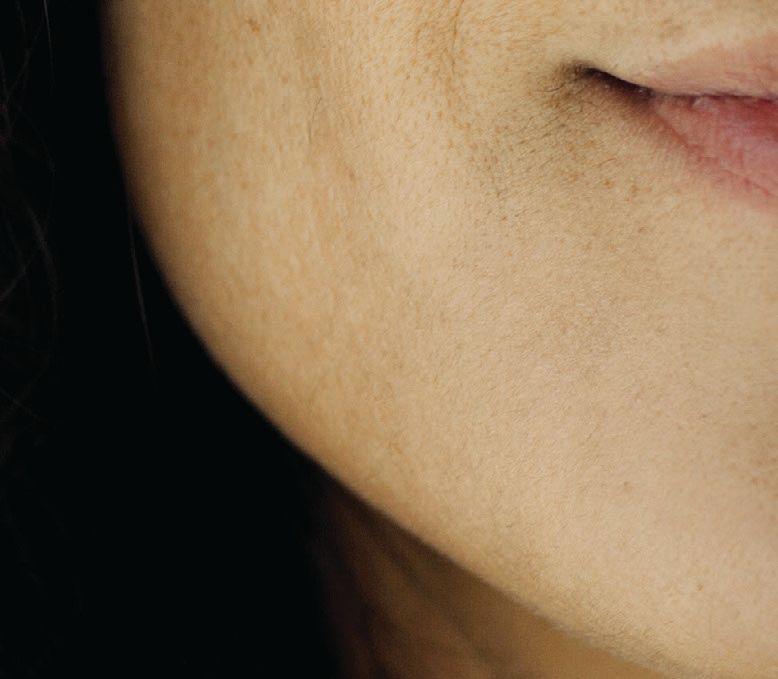




































Do you experience pain that radiates down your leg and goes into your foot?

Can you not walk as far as you used to?
Do you have pain in the calves that is relieved by rest?
If you have any of these symptoms, then you may have a condition called spinal stenosis. For many arthritis sufferers, spinal stenosis is a painful ailment caused by a narrowing of the spinal canal.
diagnosis of cranial and spinal disorders, pain management procedures and cranial/spinal surgery. He also has advanced training in stereotactic navigation of both the spine and brain.
If you believe you are suffering from spinal stenosis, schedule an appointment with Dr. Weiser for a comprehensive evaluation.
 Harry C. Weiser, MD, FAANS, FACS Diplomate, American Board of Neurological Surgery
Harry C. Weiser, MD, FAANS, FACS Diplomate, American Board of Neurological Surgery


Located in Building 1800 1501 US Highway 441 N. Suite 1832
The Villages, FL 32159
Main: (352) 751-8830
Fax: (352) 751-8835
cfhmg.org
Dr. Will Barsoum joined the team at Cardiovascular Associates in January 2017. To say he is thrilled about this exciting opportunity would be an understatement.
“The practice has developed an excellent reputation because the doctors are ethical, knowledgeable, and caring,” he said. “I share their vision of delivering quality cardiovascular care to the wonderful residents of Lake County.”





Dr. Barsoum attended medical school at St. George’s University School of Medicine in Grenada and completed a residency and two fellowships at Seton Hall University in New Jersey. He brings a unique skill set to Cardiovascular Associates and is experienced in treating peripheral vascular disease and pulmonary embolism.

“For me, it’s a major milestone whenever I can improve a patient’s quality of life and increase their longevity.”

He previously practiced in Lake County for more than two years before moving to Orlando.

“I’m happy to be returning to the area. This is where I want to raise my family. We have the best of both worlds. There is plenty of nature, but you don’t have to look far for shopping and entertainment.”


For all of our advanced technologies and leading edge breakthroughs in joint repair and replacement, the advancements we at AOI are most proud of are those that our patients make in reclaiming their quality of life. If you are experiencing pain or weakness in a knee, shoulder, or hip and feel it’s time to do something about it, there’s no time like right now. Come see us, we’re here for you.
 Alfred J. Cook Jr. Orthopedic Surgeon John T. Williams Jr. Orthopedic Surgeon
Alfred J. Cook Jr. Orthopedic Surgeon John T. Williams Jr. Orthopedic Surgeon





























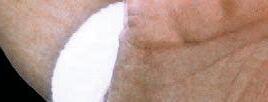


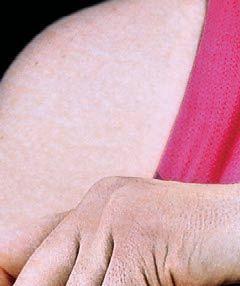


























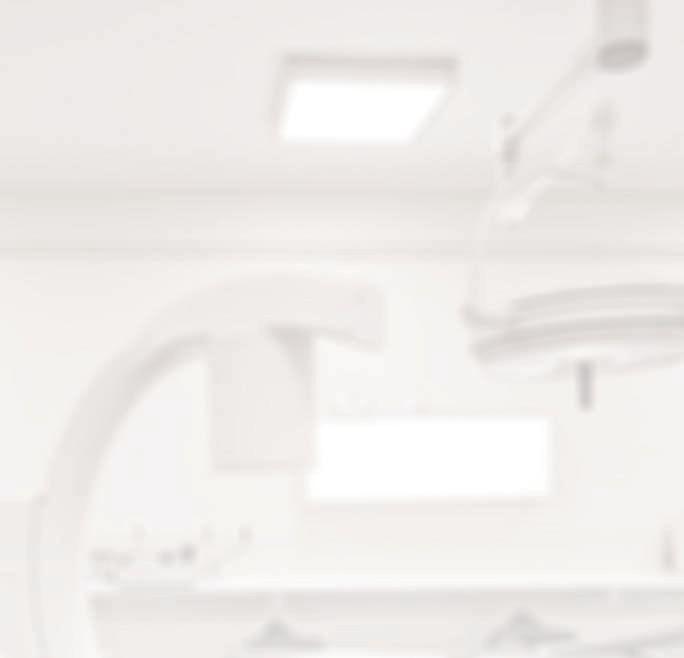






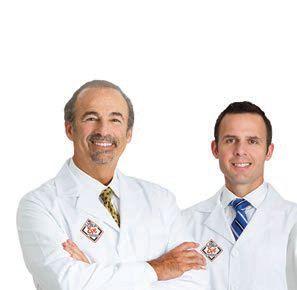
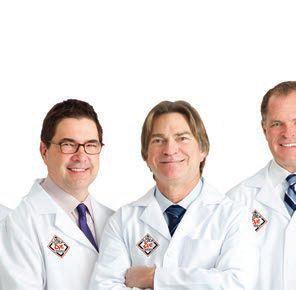
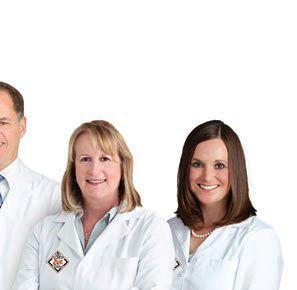






April 2017
Through knowledge gained on the job and, in some cases, by enrolling in continuing education classes, Lake County business owners have become experts in their respective elds. In our “Ask the Expert” feature, they’re providing free advice that definitely will benefit faithful readers. Promotional Feature

As warm weather arrives this month, plenty of water-related recreational opportunities await. Swimming in home pools, taking a ride in the family boats, kayaking the scenic waterways, and swimming in lakes are some of the most popular activities. However, it is vitally important to take precautions with each of them. After all, staying afloat means staying alive.

In today’s world, there’s more to camping than pitching a tent and sitting around a bonfire. In Lake and Sumter counties, summer camps for children cover the gamut of activities— from athletics and academics to theater and science.
SEARCHING FOR THE TRUTH
58 Debunking common health myths.
LET YOUR HEALTH SHINE
60 Howsunlight can benefit our well-being.


KISS YOUR RASH GOODBYE
62 How to avoid poison ivy.
GIVE 100 AND ZEN PERCENT
66 It’s a hectic world. Try easing your mind.
OVERCOMING SOCIAL ANXIETY
68 Don’t go at it alone.
TAKE A LESSON FROM NATURE
72 Discover self-growth and wisdom.
UNPLUG YOURSELF FROM TECHNOLOGY
74 Sometimes, we need a digital detox.
ARE TAXES TOO TAXING?
78 How to locate the right tax preparer for you.

TAX ADVICE YOU CAN DEPRECIATE
80 5 frequently missed personal income tax deductions.









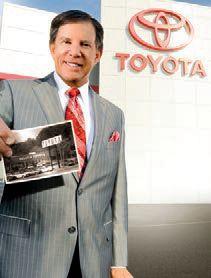
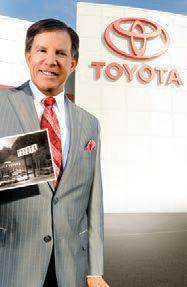





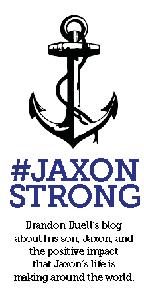
SUBSCRIPTIONS: Order a subscription of your favorite magazine to be delivered directly to your home for just $72. Each subscription includes 12 consecutive issues of Lake & Sumter Style, Village Style or Healthy Living. Choose 2 or more magazines for $85 per year. To order, call 352.787.4112 or mail us at: Subscriptions at Akers Media, P.O. Box 490088, Leesburg, FL 34749.







CHANGE OF ADDRESS: If you are a seasonal resident or have moved, send your address change request to general@ akersmediagroup.com or mail us at: Subscriptions at Akers Media, P.O. Box 490088, Leesburg, FL 34749.







BACK ISSUES: Order a single issue by mail for $7, or 2 or more single issues for $9. To pick up a back issue from our office, please call 24 hours in advance.
DOUG AKERS / president doug@akersmediagroup.com
KENDRA AKERS / publisher/editor-in-chief kendra@akersmediagroup.com
JAMIE EZRA MARK / chief creative officer jamie@akersmediagroup.com
EDITORIAL // DESIGN // PHOTOGRAPHY
LEIGH NEELY managing editor leigh@akersmediagroup.com

JAMES COMBS staff writer james@akersmediagroup.com
THERESA CAMPBELL staff writer theresa@akersmediagroup.com
CHRIS GERBASI staff writer chris@akersmediagroup.com
JASON FUGATE creative director jason@akersmediagroup.com
VOLKAN ULGEN art director volkan@akersmediagroup.com
JOSH CLARK senior designer josh@akersmediagroup.com
MICHAEL GAULIN production director michael@akersmediagroup.com
FRED LOPEZ chief photographer // fred@akersmediagroup.com
CONTRIBUTING WRITERS

FRED HILTON, B.D. CONRAD, RICHARD T. BOSSHARDT M.D.
SALES // MARKETING
TIM MCRAE / vice president of sales tim@akersmediagroup.com
MIKE STEGALL advertising executive mike@akersmediagroup.com
TINA MORRISON advertising executive tina@akersmediagroup.com
ADMINISTRATION
DEB MATLOCK / office manager deb@akersmediagroup.com
AUBREY AKERS / administrative assistant aubrey@akersmediagroup.com
DISTRIBUTION
SCOTT HEGG / distribution manager scott.hegg@akersmediagroup.c
One basic fact of modern life is there always will be more to do on any given day than can be accomplished in any 24-hour period. Another basic fact of modern life is most of us won’t stop trying to achieve the unattainable goal of total organization. How can you sift through all the information, designed to make your life more organized, without becoming lost in another timewasting exercise?
While it may seem like busy work at the time, it is helpful to make a list. Itemize your goals and responsibilities for the day, the week, or even longer to help focus on the important details of your life. Prioritize and coordinate activities for the most successful outcome. A good list keeps you on track and also serves as a reminder of what you want to accomplish. Nothing throws off your plans to be organized faster than forgetting an important detail or activity.
Allow more time for every activity than you think it will require. Delays and unforeseen obstacles are a fact of life. If you build them into your schedule ahead of time, you’ll eliminate a lot of the stress of unexpected events that slow your progress.
Reduce or eliminate clutter. This is defined as all the stuff you own, or even the endless list of miscellaneous chores you think are important but, truthfully, just add chaos to your life. Minimalism, in your possessions or in your activities, allows you to focus on what matters.
Establish a clear vision of your goals. Don’t give normal day-to-day chores greater priority than they deserve. Look at the big picture, and let the little stuff fall into place wherever it can. Many things cannot be controlled. Put your energy where it produces the greatest results. Let everything else take a back seat.
Surround yourself with people who are organized and get results. Avoid negative, toxic, or lazy people when you want to be your best self. People’s moods and behaviors can be contagious. Try to catch a good one.
If you appreciate this advice, dive into this month’s issue. You’ll find guidance from professionals across the community— chiropractors, financial advisors, and everything in-between.
Until next month,
Kendra Akers
The excitement of Leesburg Bikefest returns this month as man and machine roar into the Lakefront City. Follow these simple rules to ensure nobody becomes needlessly injured.

•Roads are busier than any other time of the year. Drive slower to account for traffic and sudden stops.
•Wear safety gear—helmets, leather, gloves, and boots.
•Don’t tailgate. Many motorcycle accidents occur when inattentive riders rear-end a motorcycle ahead of them.
•If you have a passenger, make sure he or she holds firmly against you or onto the motorcycle’s handholds.
TRIVIA TIME
Q: Speaking of the Leesburg Bikefest…can you name the year this increasingly popular event made its debut? Please make an educated guess before looking at the answer below.
Florida Hospital Waterman was one of only seven hospitals in Florida to receive The Leapfrog Group’s coveted “Top General Hospital” designation.
The award recognizes hospitals that exhibit quality performance in many areas of care, including infection rates, maternity care, and prevention of medical errors.
“Being acknowledged as a Top Hospital is an incredible feat achieved by less than three percent of hospitals nationwide,” says Leah Binder, president and CEO of The Leapfrog Group. “With this honor, Florida Hospital Waterman has established its commitment to safer and higher quality care. Providing this level of care to patients in the community requires motivation and drive from every team member. I congratulate the board, staff, and clinicians whose efforts made this possible.”

…has the highest level of education and skill. …uses top-notch technology and equipment. …provides the best possible care to our patients. …is getting bigger.


Dr. Robert Purdon, a radiation oncologist for 30 years, loves being part of RBOI. While he feels honored to offer patients advanced technologies and techniques, the most rewarding part of the job is interacting and forming genuine relationships with patients.
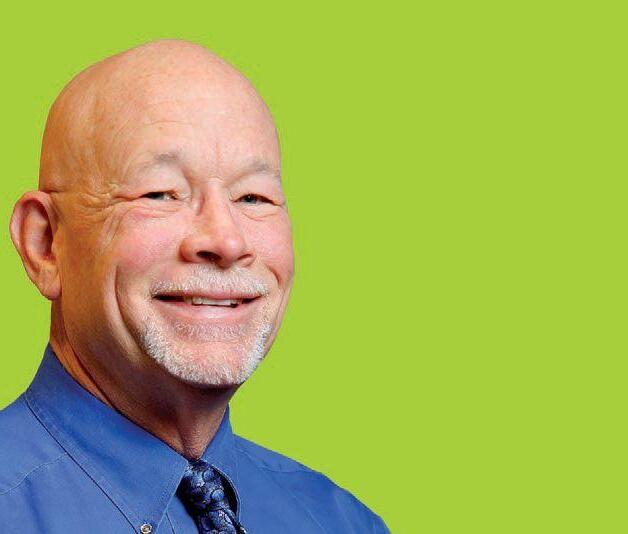
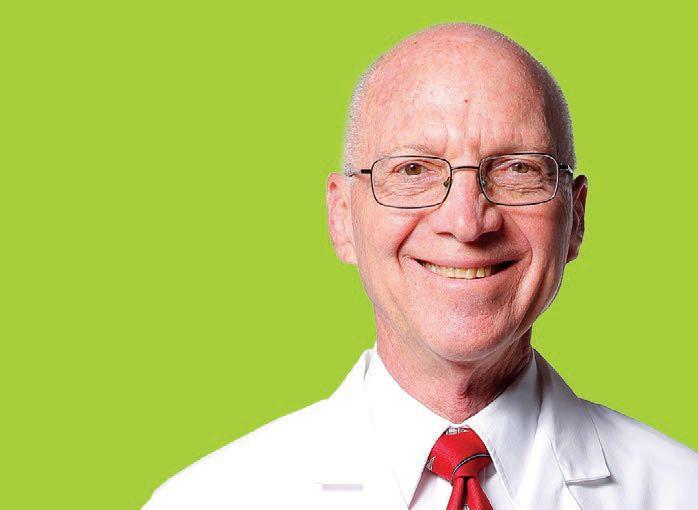
DR. HERMAN FLINK
We’re excited to announce the addition of Dr. Herman Flink, a radiation oncologist in both radiology and radiation oncology. He completed his residency and fellowship at Johns Hopkins University.
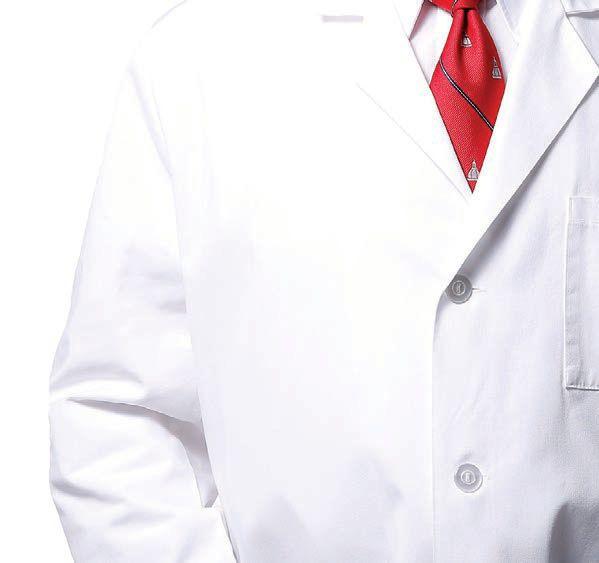
THE VILLAGES 352.259.2200
OCALA 352.732.0277

TIMBER RIDGE 352.861.2400
INVERNESS 352.726.3400

LECANTO 352.527.0106

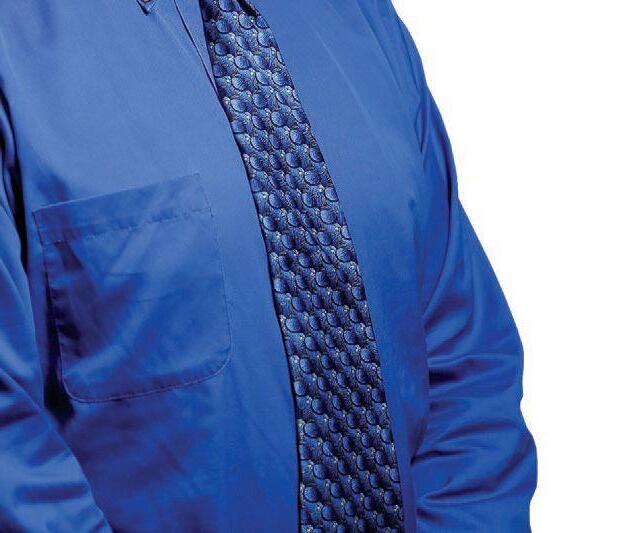

RBOI.COM
 DR. ROBERT L. PURDON
DR. ROBERT L. PURDON
Mid Florida Eye Center in Mount Dora was one of only two Florida-based ophthalmology practices selected to participate in the clinical trial of a new lens, the Multifocal Toric IOL. On Dec. 22, the U.S. Food and Drug Administration (FDA) approved the prescriptive lens.
“This is a significant and exciting treatment option for cataract patients who are primarily over the age of 55 seeking better solutions,” says Dr. Gregory Panzo, principal research investigator and co-founder of Mid Florida Eye Center. “When selected to perform clinical trials, Mid Florida Eye Center has the ability to provide qualifying patients the most advanced, leading-edge treatment.”

Mended Hearts, the largest heart patient support network in the world, is now being offered at Leesburg Regional Medical Center (LRMC).
The support group inspires hope and improves quality of life for patients and their caregivers through ongoing peer-to-peer support.
“The Mended Hearts support group is a valuable resource that will help patients through their heart recovery journeys,” says Jennifer Woods, volunteer coordinator at Leesburg Regional Medical Center.
Mended Hearts has 200,000 members and 300 chapters throughout the world. The LRMC chapter meets on the second Tuesday of the month at 10 a.m. at the hospital’s Wound Care and Hyperbaric Center.

South Lake Hospital welcomed its first new baby of 2017 when Gionni David Rascati was born Jan. 1 at 9:25 p.m. The baby boy, who weighed 7 pounds, 15 ounces, is the second child for proud parents Salvatore Rascati and Sarah Kilhullen-Rascati.
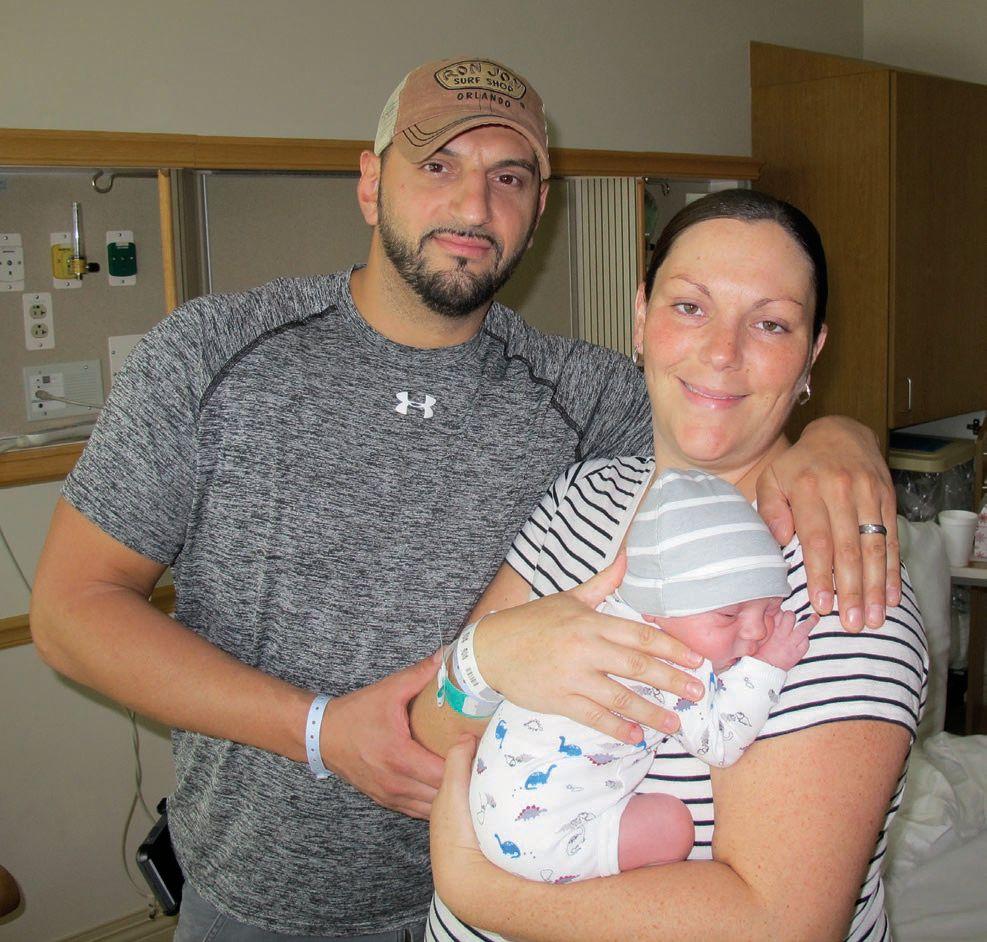

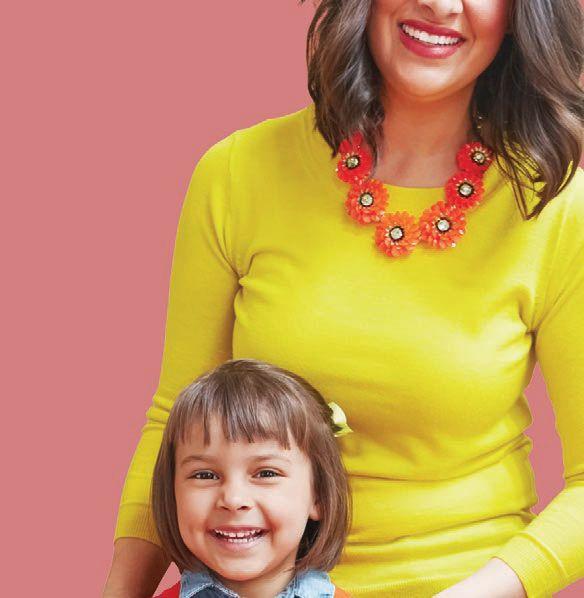




“I love making bread. Every day is different. You always have to feel your dough, the atmosphere in the kitchen, the temperature, the humidity.”—Philippe WRITER: LEIGH NEELY
Philippe Farrugia is a master French baker. He and his wife, Kathleen, have a little shop in Grand Island called A Wish or Two Ago French Bakery & Market Place. When you look through the window, you see lace and home décor items. When you open the door, you are hit with a most amazing aroma. It is a combination of what has been in the oven all morning—bread, croissants, patisseries, cheesecake, cinnamon rolls (a nod to Americans), cookies, macaroons, biscotti, and other wonderful treats.
Philippe was only 10 when he began working in a bakery during summers. His cousin owned four bakeries in London. His vast experience is what makes him a master baker. The avid baker makes 20 different types of bread, and Kathleen tells you immediately they are prepared with the healthiest ingredients.

“We believe this is really a ministry that Jesus has chosen us to do, especially with all the stuff going on with gluten free,” Kathleen says. “What happens is anything involving dough with enriching, bromating, and bleaching of the flours, all this goes through the body and it causes problems.”
She says even the government has said all ingredients must be listed, but with whole, complex ingredients, the list is small.
“Jesus is the bread of life. He broke bread at the table and said, ‘Partake of this; this is my body.’ He also multiplied the bread, so we know bread is important to us,” Kathleen says. “That’s why we are working here to repair the reputation of bread.”
Their bread is made without any additives, chemicals, or synthetic ingredients. And with flavors like kalamata olive, cinnamon raisin, rye, nine-grain, sourdough, and even what they call “God bread,” you know you’re getting good, healthy food that will sustain your body.
Throughout the shop, you’ll see names stuck to various items hanging from the ceiling. These names are from people who have left prayer requests for the couple, so their ministry not only feeds the stomach; it feeds the soul.
“Here is bread, which strengthens man’s heart, and therefore is called the staff of life.”
— MATTHEW HENRY
The focus of our practice is to provide the very best surgical care available to patients. We are committed to achieving this goal through continuing education and training in the most current robotic and laparoscopic techniques. Our practice treats our patients, nurses and staff like family. It is our belief that all patients deserve the best medical care available. We provide the most advanced, compassionate surgical care that has helped thousands live longer, healthier, happier lives.
Our website, www.MidFloridaSurgical.com provides information regarding each of our surgeons.






It once was “snake oil,” but these days products of this nature are hyped as best for weight loss, wrinkle removal, and a variety of other cures. Now, there’s apple cider vinegar.
WRITER: FRED HILTONBack in the 1940s and 1950s, a tonic called Hadacol took America by storm. Sold over the counter, it promised to cure high blood pressure, ulcers, stroke, and many other illnesses.
Its massive advertising campaign (second nationally only to Coca-Cola) used some outrageous testimonials, including this one: “Two months ago, I couldn’t read or write. I took four bottles of Hadacol, and now I’m teaching school.”
Public demand for Hadacol was enormous. “People paid $3.50 for a 24-ounce bottle even if they had no food in the pantry,” Mentalfloss.com says.
There were some vitamins, but Hadacol also had a healthy kick of alcohol. You felt better temporarily, but it didn’t cure anything.
A combination of lawsuits, government investigations, and tax troubles forced Hadacol into bankruptcy.
Today, we hear many amazing stories of the health benefits of apple cider vinegar. Is it just a new Hadacol
or is it for real? The proponents of apple cider vinegar are adamant that it is a wonder food with enormous benefits— lower blood sugar levels, lower cholesterol, weight loss, lower risk of heart disease, and protection against cancer.
Several studies indicated apple cider vinegar does lower cholesterol and blood pressure in rats. Few studies address the effect it has on humans. However, one study done by Harvard University showed that women who ate salad dressings with vinegar had a reduced risk of heart attack.
A study in obese individuals showed that daily vinegar consumption led to reduced belly fat, waist circumference, lower blood triglycerides, and weight loss. Common dosages range from one teaspoon to two tablespoons. Consumption of more than that can have harmful effects due to acidity, doctors say.
Apple cider vinegar is clearly not a reincarnation of Hadacol. There are proven positive effects, but more research is needed. However, it does have its benefits. “At the end of the day, apple cider vinegar appears to be very healthy,” Kris Gunnars wrote in Authority Nutrition. “It’s not a ‘miracle’ or a ‘cure-all’ like some people seem to believe, but it does clearly have some important health benefits, especially for blood sugar and weight control.”
Getting back to Hadacol, if you’re wondering how the product got its name, the company president explained: “Well, I hadda call it something.”
Sources
“13+ Health Benefits of Apple Cider Vinegar,” Reader’s Digest, rd.com http://www.rd.com/health/wellness/apple-cider-vinegar-benefits/
“6 Proven Benefits of Apple Cider Vinegar,” by Kris Gunnars, Authority Nutrition, authoritynutition.com https://authoritynutrition.com/6-proven-health-benefits-of-apple-cider-vinegar/ “Hadacol, the Last of the Medicine Shows,” Mental Floss, mentalfloss.com http://mentalfloss.com/article/23920/hadacol-last-medicine-shows
“Is apple cider vinegar rally good for you?” by Ellie Krieger, Chicago Tribune, from The Washington Post, March 26, 2016 http://www.chicagotribune.com/lifestyles/health/ct-apple-cider-vinegar-health-20160326-story.html
“1 Tbsp of Apple Cider Vinegar for 60 Days Can Eliminate these Common Health Problems,” by David Wolfe, davidwolfe.com https://www.davidwolfe.com/1-tbsp-acv-eliminate-health-problems/

“At the end of the day, apple cider vinegar appears to be very healthy,”
— KRIS GUNNARS



















“I had surgery on both eyes, two weeks apart. Both surgeries went great. I didn’t realize how bad my vision had gotten until afterward – I can’t believe how much better I can see and how bright colors are! Dr. Gutti is a great guy! I definitely recommend him.”
– ANGELO SENO
No one should have to sacrifice a moment of life’s grand adventure to the clouding, blur or double vision caused by cataracts. When you’re ready to enjoy clear, crisp vision again, you should know about the next-level cataract services provided by Lake Eye Associates, a vision care leader in Central Florida for 40 years.

Board-certified Ophthalmologist Dr. Vinay Gutti has performed thousands of state-of-the-art procedures, including LenSx® laser cataract surgery, the safest and most accurate cataract system ever created. Dr. Gutti also utilizes the revolutionary ORA™ System for optimal selection and positioning of the world’s most innovative replacement lenses, including the extended-range-of-vision Symfony® lens.

“The Symfony® lens operates much like the natural eye, focusing seamlessly from near to far and all distances in between,” says Dr. Gutti. “It is a huge advance in permanent lens replacement, not only restoring clear vision to cataracts patients, but freeing many from glasses altogether.”












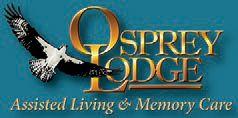



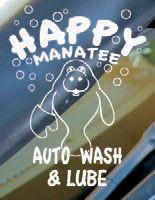
















NUTRITION FITNESS FINANCES PSYCHOLOGY CHIRO-
PRACTIC CARE CARDIOLOGY PLASTIC SURGERY PAIN
MANAGEMENT NUTRITION FITNESS FINANCES PSYCHOLOGY CHIROPRACTIC CARE CARDIOLOGY PLASTIC SURGERY PAIN MANAGEMENT NUTRITION FITNESS
FINANCES PSYCHOLOGY CHIROPRACTIC CARE CARDIOLOGY PLASTIC SURGERY PAIN MANAGEMENT NUTRI-
TION FITNESS FINANCES PSYCHOLOGY CHIROPRACTIC CARE CARDIOLOGY PLASTIC SURGERY PAIN MANAGE-
MENT NUTRITION FITNESS FINANCES PSYCHOLOGY
CHIROPRACTIC CARE CARDIOLOGY PLASTIC SURGERY
PAIN MANAGEMENT NUTRITION FITNESS FINANCES PSYCHOLOGY CHIROPRACTIC CARE CARDIOLOGY
PLASTIC SURGERY PAIN MANAGEMENT NUTRITION
FITNESS FINANCES PSYCHOLOGY CHIROPRACTIC CARE
CARDIOLOGY PLASTIC SURGERY PAIN MANAGEMENT
NUTRITION FITNESS FINANCES PSYCHOLOGY CHIRO-
PRACTIC CARE CARDIOLOGY PLASTIC SURGERY PAIN
Everyone is encouraged to go to the doctor with questions in order to come away fully knowledgeable about what’s wrong. Healthy Living has brought together a number of experts to answer questions about various health issues. Find your answers here from the dedicated health professional in our area.
MANAGEMENT NUTRITION FITNESS FINANCES PSYCHOLOGY CHIROPRACTIC CARE CARDIOLOGY PLASTIC SURGERY PAIN MANAGEMENT NUTRITION FITNESS

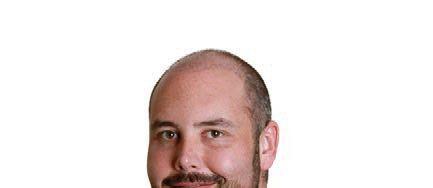
Chiropractic benefits everybody because it focuses on the central nervous system. The spine protects the spinal cord. When bones in your spine are not moving properly, it causes disruption in nerve flow. Nerve interference can lead to problems such as indigestion, constipation, and asthma. In addition, when nerves are pinched, pain can radiate down a person’s leg or arm, depending which part of the spine the nerve or nerves are being impinged. As a chiropractor, I help restore proper bone movement and thus eliminate the disruption in nerve flow.

Chiropractic is also very beneficial in eliminating chronic headaches. I’ve treated patients who have had chronic headaches for as long as six years. I conduct a motion study anal-
ysis where I’m taking x-ray images of patients from the side, as well as bending forward and backward. This helps me determine which bones in the cervical spine are moving and which ones are not. Nerves near the bones not moving are being pinched, resulting in chronic headaches. In fact, 85 percent of headaches result from problems with the cervical spine. Many patients take Ibuprofen, which only masks the underlying problem instead of fixing it. I perform a series of treatments for these patients, and afterward I show them before and after images of their x-rays so they can understand why they were feeling pain to begin with.
Of course, I also treat problems unrelated to the spine, such as tennis elbow, plantar fasciitis, and



rotator cuff injuries. One tool that is very beneficial is LiteCure Laser Therapy, which energizes damaged cells and increases circulation to a painful area. The laser has been extremely helpful with treating neuropathy and restoring function to the nerves. Many people with neuropathy cannot feel their feet and often fall as a result. Some end up
falling and breaking a hip and end up in nursing homes. I want these patients to be safe and independent for as long as possible.




QAnytime you are making a decision that has financial implications, you should consult with an expert to discuss the risks and rewards involved with that decision, says financial advisor Meg Black with Edward Jones, 8483 Mulberry Lane in The Villages.

“A great time to see an advisor is when you are determining how much to save for retirement or if you have another major life change, for instance, if you’re getting divorced, buying or selling a home, or changing jobs,” Meg says. “If you start a new position, instead of rolling over a previous 401(k) into your new company’s plan, you may save a substantial amount of money and realize an improved return by using a financial advisor who offers you more investment options by rolling into a new IRA.” When you
are thinking about when to retire and trying to determine if you are ready, an advisor can help you determine what the your income stream is going to look life for life, which really sheds light on whether working a few more years provides the financial benefit you want.”
Edward Jones is a full service financial firm, handling savings plans for retirement and education, CDs, annuities, stocks, bonds, mutual funds, and life and long term care insurance. The well established firm has offices nationwide and over 14,000 advisors. Their advisors use an established process to create a customized plan for each client to help them reach their financial goals”
“At Edward Jones, we have a team behind each advisor that helps them be an expert in whatever area
their client needs,” Meg says. The firm does a lot of retirement planning in The Villages, a 55 plus community. But Meg emphasizes Edward Jones also works with small business owners who want to provide benefits to their employees, parents who are saving for college, and higher income earners who want to reduce taxes.
When looking around for a financial advisor and firm, consumers should be look for an advisor who is upfront about their costs and fees and make sure they are reasonable. “I always perform a complimentary financial review and a written retirement income plan when I meet with a prospective client,” Meg says, “so even if you only want a second opinion or just want to ask some questions, I’m happy to sit down with you at no cost. My favorite client is one who I provide


information and education to and then we partner together to make decisions to reach their goals.”
Consumers should also look for two important attributes when choosing an advisor. “The most critical quality is that you are comfortable with your advisor and feel like you can be honest with them about your concerns, and that they are being honest with you,” Meg says. “Second of all, the firm that your advisor is with is important- it must be a trusted firm with support behind your advisor so they can be extremely knowledgeable about your specific situation.”




Truthfully most individual are denied disability benefits when filing an application—around 70 percent, and that holds true at the first appeal level, which is around 80 percent. Though the process for filing a claim for the federal disability program is not meant to be adversarial, it can become just that. Incorrect information is the norm, which is not a surprise for a program that does not educate the people it is supposed to serve.
Most disability representatives walk through this process with you. Significant benefits can be lost with even a slight error on the initial application. Having someone who knows the process and can also hold the Social Security
Administration accountable to what it should do is comforting.
For a majority of individuals denied for SSDI or SSI, the way to win the disability benefits they deserve is to pursue their case to a social security hearing presided over by an administrative law judge (ALJ).
While the case is headed toward a hearing, the entire responsibility for proper preparation falls to the individual filing, or their disability representative, who may or may not be a disability lawyer.
ALJ disability hearings require preparation because from the time a case is denied at the first-appeal level (reconsideration) until the
hearing is held (often as long as two years), the Social Security Administration does nothing to assist the claimant’s case.
Most important is gathering all the necessary supporting documentation. During the time between the reconsideration appeal and the hearing, a considerable amount of newer records must be obtained and forwarded to the hearing office.
However, proper preparation includes more than gathering records. To win a case, the claimant must be guided through testimony so they are aware of questions to be asked and everything that happened previously in the case must be
analyzed. This mean studying all decisions made by disability examiners and ensuring there are no mistakes in judgment or errors in the application of certain rules.
The ALJ regularly calls on vocational experts to provide expert testimony. They often respond to hypothetical scenarios brought up by the judge. Understanding, interpreting, and, more importantly, countering the assertions of the experts is typically a task best done by an experienced disability representative.
Because the pain could indicate that you are suffering from peripheral artery disease (PAD) or venous disease. Both veins and arteries can become narrowed and occluded. The prevalence of these diseases is beyond our imagination, yet both of them are easily treatable when diagnosed in their early stages. A physician can also help you control risk factors, such as diabetes, high blood pressure, and high cholesterol levels.
First, we’ll talk about arteries. Arteries carry oxygenated blood away from the heart. Two-thirds of people who have blockages in the arteries of the leg also have blockages in the arteries of the heart. Therefore, treating arteries is of utmost importance because pa-


tients could suffer a heart attack or stroke. Patients with blockages in the leg typically tell me they used to walk two miles and now can barely walk one-fourth of a mile. Their legs get tired. As the disease advances, they experience leg pain during rest. In the final stages, they typically get slow-healing ulcers that can become infected and spread throughout the body.
Veins, on the other hand, carry blood to the heart. Venous disease can also lead to leg pain, making them swollen, achy, tired, and heavy. With venous disease, ulcers typically form around the ankle. In some cases, bacteria gets in and enters the rest of the body. That is why it is so important to treat venous disease before ulcers occur. Skin discoloration, ankle swelling, and
skin indentation are symptoms of venous disease.

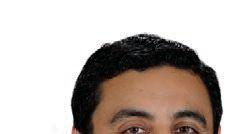
My goal is to do everything I can to help patients avoid surgery. In most cases, occluded veins and arteries can be fixed with compression stockings, balloon angioplasty, stenting or atherectomy, a procedure where plaque is removed off the artery walls. FOR

Gleaned from an Interview with Dr. David Catalano, radiation oncologist and long-term diet/cancer proponent: Prevention is the best medicine, and many experts believe the diet/ cancer connection is very important. But it’s hard to prove certain foods promote cancer, because most diet research isn’t well funded, and the research we have is pretty scarce. It’s common sense that what may cause cancer is worth avoiding, particularly if you are at increased risk.
“We now know that smoking causes many cancers, including lung, throat, esophagus, bladder, and even breast cancer. We also know that patients who continue to smoke after they get lung or throat cancer have a much lower survival rate. Current data is beginning to imply that diet is the leading cause of three of our top four cancers: prostate, breast, and colorectal. For this reason, I advise my patients with these cancers in particular to do some homework, and try to adjust their diet and lifestyles accordingly” says Dr. Catalano.
“The World Health Organization published data in October 2015 that said processed red meats, e.g. hot dogs, bacon, sausage, bologna, cause more cancer in the world than smoking does; they classified all processed red meat as a carcinogen, and all red meat as probably carcinogenic to humans” he says. The American Cancer Society (ACS) has long ad-
vocated a diet low in red meat and the consumption of 5 to 9 servings of fruit and vegetables daily. So when it comes to cancer prevention, Dr. Catalano recommends the ACS diet as a starting place.
Dr. Catalano believes there is additional risk from animal milk protein. “There is a less certain connection between milk consumption and both breast and prostate cancers. So, if a patient has one of these cancers, I believe it’s important to minimize milk products, including cheese and yogurt. And, if they have colon cancer, I think it’s very important to avoid red meat as well” he adds.
“One of the most fascinating papers to come out recently is from a friend of mine, Dr. Michael Orlich from California, in which various diets were studied in relation to colorectal cancers” Dr. Catalano said. “The gist of the paper is that the diet with the highest likelihood of developing colorectal



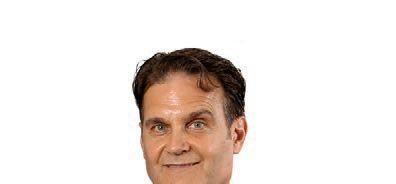
cancer was the typical American red meat diet, followed by the semi-vegetarian, (who eats meat more than once a month); the vegan diet (no animal products of any kind) was less likely, and the lacto-ovo vegetarian (they eat eggs, cheese, milk products, but they don’t eat meat of any kind) was even less likely. But the lowest risk of all was in pesco-vegetarians—fish-eating vegetarians (and eating other meats once a month or less)—who had a 43% lower risk than the average American. This study showed the pesco-vegetarian diet was the best diet, of those studied, for the prevention of colorectal cancer; a previous paper
suggested that a fish-eating vegetarian diet is also associated with the longest lifespan versus other diets.” Both papers were published in the Journal of The American Medical Association.
“A vegetarian diet with occasional fish is my favorite diet; the last time I ate red meat on a regular basis was in the 1970s, when I was inspired by others who were trying to eat healthy. Now, it is becoming clear this may be the ultimate anti-cancer diet” Dr. Catalano added.

Amendment 2, approved by Florida voters in November, effectively legalized medical marijuana by expanding the list of conditions for which patients can qualify for the drug.
That has opened the door for facilities such as Medical Marijuana Treatment Clinics of Florida to treat a greater number of patients with a wider range of illnesses, says Dr. Joseph Dorn, who guides the clinics.

The clinics are located at Baylee Plaza, 16810 S. U.S. Highway 441, Suite 502, Summerfield, as well as Tallahassee, Ponte Vedra Beach, Seminole, and St. Petersburg, with two more offices planned in Miami.
The clinic near The Villages is the busiest office, Dorn says, because of the demographics of the age 55plus retirement community.
“There’s a common misconception that it’s mostly young people who want to use marijuana

products,” he says. “We’re targeting the 50 and older group. People over age 50 tend to have more medical illnesses that qualify them for medical marijuana.”
The amendment allows the use of medical marijuana to treat cancer, post-traumatic stress disorder, ALS, or amyotrophic lateral sclerosis, Parkinson’s disease, HIV/AIDS, Crohn’s disease, epilepsy, glaucoma, and multiple sclerosis. Equally important, it includes language for “related or similar” debilitating conditions, meaning physicians can treat “countless” other illnesses, Dorn says. The original law limited use of low-THC marijuana to patients who were terminally ill with cancer, or had chronic seizures or severe muscle spasms.
“The whole goal of Amendment 2 was to increase access for people who can benefit from medical marijuana,” says Dorn, who spent the past 12 years
working in hospice care, seeing firsthand patients in need of relief.

Dorn’s clinics are strictly for the dispensing of medical, not recreational, marijuana. And though the drug is being used in a medical setting, the clinics still battle negative perceptions about its use— from patients themselves, he says.
“A lot of the patients are older people who all their lives thought marijuana was bad,” Dorn says. “You may have a woman who’s 82 and never smoked a joint in her life.”

Now the clinics are helping patients move past their perceptions and realize the





benefits of marijuana, and the amendment helped raised awareness, Dorn says. Patients may see if they qualify for medical marijuana by taking a survey at the clinics’ website, mmtcfl.com.
“Our philosophy is, with our pricing and our locations, we want it to be accessible and affordable for people who qualify for medical marijuana throughout the state of Florida,” he says.


Misconceptions about end of life care can cause unnecessary suffering, both physically and emotionally.
MYTH: Hospice is where you go when there is nothing a doctor can do.
TRUTH: Hospice is a philosophy of care providing medical, emotional, and spiritual care focusing on comfort and quality of life.
MYTH: Good end-of-life care is very expensive.
TRUTH: Medicare and Medicaid beneficiaries are covered 100 percent by hospice, and most insurance plans, HMOs and managed care plans include hospice coverage. Patients with no financial resources are not denied hospice services.
MYTH: Hospice is only for the last days of life.
TRUTH: Too often patients begin to receive hospice services when there is little time left. Cornerstone patients

and families can receive care for six months or longer, depending on the course of the illness.


MYTH: Hospice is only for cancer patients.
TRUTH: All terminal diagnoses qualify. Cornerstone cares for patients with end-stage chronic diseases like COPD, Alzheimer’s, cardiovascular, and neuromuscular diseases.
MYTH: Choosing hospice means giving up all medical treatment.
TRUTH: Cornerstone provides high-quality pain management and symptom control. Cornerstone Hospice focuses on improving the quality of life, not hastening the progression of the disease.
MYTH: Families are not able to care for people with terminal illnesses.
TRUTH: Cornerstone Hospice involves the family and offers professional support and training in caring for their loved ones. Cornerstone has a variety of specialized programs designed to meet the special needs of patients and their families.
MYTH: There is no hospice care available where I live.
TRUTH: Cornerstone serves patients and families in seven counties including Lake, Sumter, Orange, Osceola, Polk, Highlands, and Hardee Counties. The majority of patients recieve in-home care. When home is not an option, one of the several Cornerstone hospice houses can be the next best thing.
MYTH: After the patient’s death, hospice care ends.
TRUTH: Bereavement services and grief support are available to family members for up to one year after the death of a patient. Friends and family members can meet in individual or group sessions.
If this information surprises you, take time to learn more.

In a traditional gym, a person signs you up and typically never speaks to you again. You are left to come up with a workout routine on your own, regardless of whether you know what you are doing or not. Those who are new to a gym see people who look like bodybuilders and feel like they will never look that way. They give up and quit going to the gym.
Things are vastly different at Anytime Fitness. We are following what I refer to as a coaching model of doing things. That means we have personal coaches who are passionate about healthy lifestyles and will help clients build a strong mindset to achieve their fitness goals. We have one or two personal coaches at each of my six locations. There are obviously many benefits to having a personal coach. They show you how to
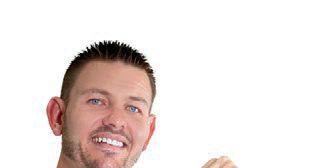
perform exercises correctly, which maximizes results and reduces risk of injury. They can also help you set realistic goals, form healthy habits, and challenge you to be your best. A personal coach is also wonderful because of the accountability factor.

Of course, fitness is not only about what you do inside the gym, but outside the gym, as well. I talked about the coaching model, and that is now extending into

the world of technology. Anytime Fitness now has a new app that allows us to perform virtual coaching. That means clients have access to a personal coach who provides them with education, tips, and inspiration. A personal coach might motivate them to go around the block during the evening or give them advice on what to eat for dinner. It’s wonderful for busy people who cannot always get to them gym. The coaches will work
out ideas with you whether you’re at the beach on vacation or out of state on a business trip.

I’m a plastic surgeon who has practiced in the area since 1998. At no other time in my career have there been so many great procedures and technologies for facial rejuvenation. I have fallen in love with some of the non-surgical injectable treatments I use. They are neuromodulators such as Xeomin, Botox, Belotero, and Radiesse.

Belotero is excellent for fine lines and lip enhancement; Radiesse significantly improves deep folds around the mouth; Botox reduces facial wrinkles; and Xeonin helps improve crow’s feet, forehead
creases, and frown lines between the eyebrows while also restoring lost volume around the mouth.



In addition to injectable treatments, I also perform a mini face and neck lift with smart liposuction of the neck and jowls. As we grow older, the effects of gravity play a role in developing a turkey neck. That means we have sagging jowls and sagging, loose, and wobbly skin on the cheek. Your neck gives your age away, but unfortunately the neck is one of the most widely neglected parts of our body. My procedure is performed using oral
sedation and local anesthesia— which eliminates both the risks and costs of general anesthesia.
Here’s something else my patients appreciate. Whether they are receiving an injectable or undergoing a mini face and neck lift, all procedures are performed in the comfort of my office. Eliminating the hospital admissions process makes the overall experience less stressful and more convenient for patients.
To find out more about facial rejuvenation, visit drserra.com or call 352.259.0722
Our physicians and medical professionals have been treating Central Floridians for years with a level of exemplary cardio care that comes straight from the heart. We’re in a new location now, but our hearts are where they’ve always been—in the right place—with you and the health of your family. New location! The Oaks Professional Center, 8575 NE 138th Lane Call today for a consultation at 352.674.2080 /// heartofthevillages












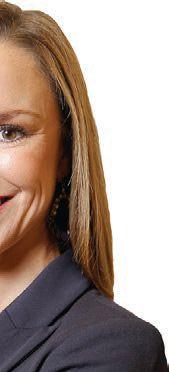






























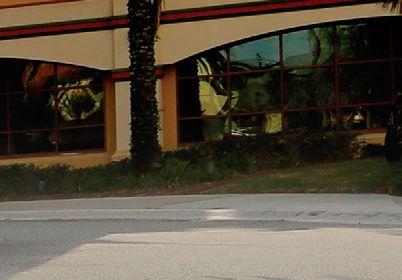




Abrand-new medical practice has familiar faces to many patients in Lake and Sumter counties.

Advanced Orthopedic Institute (AOI), which opened in February, is a partnership formed by Dr. John T. Williams Jr. and Dr. Alfred J. Cook Jr., who previously worked together for several years.
The two orthopedic surgeons brought thousands of patients, as well as an experienced staff of 15, to the new private practice at 1400 N. U.S. Highway 441, Suite 552, The Villages. The office is in the Sharon L. Morse Medical Office Center.
AOI addresses a variety of orthopedic issues, with specialization in total joint replacement. Dr. Cook specializes in sports medicine, including shoulder surgery and replacement, rotator cuff repairs, knee procedures and arthroscopy. Dr. Williams is a total joint replacement surgeon whose specialties are hip
and knee replacements and revisions. Both doctors also use early intervention treatments for arthritis.
The doctors partnered because they share a similar philosophy on patient care, Dr. Cook says.
“WE TAKE MORE OF THE HOLISTIC APPROACH TO

ORTHOPEDICS IN THE SENSE THAT WE NOT ONLY TRY TO DIAGNOSE THE PARTICULAR PROBLEM AND COME UP WITH THE APPROPRIATE PLAN TO ADDRESS THAT, BUT ALSO GIVE A PERSONAL TOUCH TO SEE HOW IT AFFECTS THE PATIENT’S QUALITY OF LIFE AND WHAT THEY ENJOY DOING AND THEIR GOALS,” he says.
The large AOI office includes a physical therapy suite, complete medical records department, and soon will have an X-ray suit.
“Because physical therapy is such a key component to recovery from orthopedic procedures, we felt it was best to keep the whole clinical pathway, both the pre-op and post-op, within our practice,” Dr. Williams says. “So we offer all ranges and types of physical therapy.”

AOI’s new office provides many advantages for patients, primarily “location, location, location,” says practice
administrator Vanessa Bean. The doctors have seen an influx of new patients, averaging 10 to 12 newcomers a day in the opening weeks. In addition, The Villages location is easily accessible for Villagers who want to pull up in their golf carts.

The transition to a new office has been hectic but exciting— and rewarding.


“We are busy because the majority of our patients stayed with us,” Dr. Williams says. “THE PATIENTS LOVE OUR NEW SPACE, THEY LOVE THE LOCATION, AND WE EVEN HAVE PATIENTS WHO WERE IN LEESBURG DRIVING UP TO SEE US.”


The doctors pride themselves on the patientphysician relationship.
“A LOT OF TIMES, PHYSICIANS, ESPECIALLY ORTHOPEDIC SURGEONS, HAVE A TENDENCY TO TREAT AN MRI OR AN X-RAY AND NOT REALLY DIVE INTO HOW IT AFFECTS THAT PERSON,”
Dr. Cook says. “Patient interaction, getting to know our patients, getting involved in their lives, and ensuring a good outcome all go hand-in-hand with our philosophy.”
Bean also says the move has been smooth.
“Opening up a new office is very challenging, and the staff had to do everything from the ground up,” she says. “Everything that needed to be done, they did it. It was a team effort. I couldn’t have picked a better team.”







For anyone wondering why someone would go into orthopedics, the answer is the cool tools. At least it is for Dr. Alfred J. Cook Jr.


Alfred knew in high school he wanted to be a doctor, and he was interested in becoming a heart surgeon. But he learned that the field of cardiothoracic surgery wasn’t what he expected during his third year at Northwestern University Feinberg School of Medicine.


“I REALIZED I ALWAYS ENJOYED ORTHOPEDICS IN THE SENSE THAT YOU WERE ABLE TO BRING ABOUT OUTCOMES FOR PATIENTS RELATIVELY QUICKLY,” he says. “You could take a person who could barely walk and allow them to walk and get back to activities relatively quickly. So that was very appealing to me.”

And so were the tools.
“I like working with my hands, and they have really cool tools and instruments in orthopedics,” Alfred says. “So, even though most of the stuff we use you can pick up at Lowe’s, that’s OK. It’s still fun and I enjoy the patient interaction.”
He also enjoys being able to use today’s, and even tomorrow’s, modern technology at Advanced Orthopedics Institute.





“We’re keeping patients at the forefront of the medical evolution, while still providing a high level of quality,” he says.
Alfred also likes working with athletes and patients who want to remain active, which is why he chose sports medicine as a sub-specialty.
Along with earning his medical degree at Northwestern University Feinberg School of Medicine, and completing his residency at the University’s McGaw Medical Center, Alfred completed a shoulder and sports medicine fellowship at Duke University Hospital in Durham, North Carolina. He is certified by the American Board of Orthopedic Surgery.

He and his wonderful wife and high school sweetheart Meredith have been together more than 20 years. They love living in Central Florida with their daughter Michaela.




Dr. John T. Williams Jr. couldn’t help but go into medicine. His father, John Sr., is a retired doctor who was the first African-American board-certified orthopedic surgeon in the state of Pennsylvania. The elder Williams was in private practice for 32 years and was affiliated for 50 years with Einstein Medical Center in Philadelphia.
“My dad was a very driven man, and he made sure that my brother, Geoffrey, and I had a very strong work ethic,” John Jr. says. “He said, ‘You don’t have to be a doctor, but I recommend you do something professional.’ He and my mother, Myrtle, were very influential in helping my brother and me to be focused and to achieve academic excellence.”
John Jr., an animal lover, initially wanted to be an orthopedic veterinarian, but in college decided to be an orthopedic surgeon. “Junior,” as he was known, followed in his father’s footsteps by earning a degree from Howard University College of Medicine in the District of Columbia in 1994, 30 years after his dad graduated from there. Geoffrey also followed into the field and is a regional manager


for an orthopedic implant company.






John Jr. also went to work at Einstein, serving as the total joint specialist for 11 years, the last seven as the director of the total joint program. He relocated in 2011 to Central Florida and has built a large patient base since then.
“WE MAKE SURE THE PATIENTS FEEL THEY ARE CATERED TO, AND WE TREAT THE WHOLE PERSON, NOT JUST THE PART THAT IS PAINFUL,” John says. “They know when we see them, they have our full attention. From the time they walk in the door to the time we are finished treating their ailment, they will feel like they are getting compassionate care.”
He and his wife, Martina, have been married for 20 years, and have a son, John T. Williams III, who is a junior in high school.
Dr. Cook performs shoulder replacement and reverse total shoulders, a more complex replacement surgery, as well as complex rotator cuff pathology using graft products to augment repairs or reconstruct the rotator cuff, and cartilage regeneration through the application of stem cells—what he calls the future of orthopedics.
“It’s a new treatment avenue that I’m exploring for patients who want to maintain joint health and preserve their native joint as opposed to seeking a replacement,” says Dr. Cook, adding that few other area doctors offer the treatment.
Dr. Williams performs custom total knee replacements by
making custom preoperative equipment and custom implants, and also uses CT scans to help create a computer navigation device that helps implant hip replacements more precisely.
The AOI family includes nurses, physical therapists, assistants, and an insurance authorization expert to help patients understand benefits. The doctors and staff like to maintain a hardworking yet easy-going atmosphere.

“I just love coming to work to work with my staff,” practice administrator Vanessa Bean says. “They’re so good-hearted, hardworking, and I love being here with them. The doctors are fun to be around, they’re down
to earth, not to mention how intelligent they are.”
The office is filled with positive energy, Latrelle Davis, LPN, says. “Everybody’s doing a wonderful job. They’re friendly. They care about the patients, they try to answer all their questions, and get information to them properly and timely.”
Medical assistant Beth Bartlette is new to the team and already impressed.
“They’re very professional and very good at what they do,” she says. “It’s hard work, but it’s rewarding because they do such a good job with their patients. Everything with them is top rate, first class.”




Ted Robbins, 77, of Webster, has been a patient of Dr. Cook’s for about 2 1/2 years, initially receiving cortisone shots for an arthritic right knee and a troublesome right shoulder. In November 2016, he required shoulder replacement surgery, performed by Dr. Cook. Three days after surgery, Ted felt no discomfort and soon had full movement. “I’m extremely happy with my range of motion,” he says. “It’s increased 100 percent from pre-surgery. Now I’m out riding motorcycles and using power tools. I do a lot of physical things, like lifting and building things.”


The misfortune of needing two major surgeries turned into good fortune for Delia Corey, thanks to the care provided by Dr. Williams and Dr. Cook, who have been her doctors for several years. Dr. Williams replaced Delia’s right knee in 2015, and Dr. Cook replaced her right shoulder in 2016. The Leesburg resident works in the thrift shop at St. Paul’s Catholic Church, and she says her job, which includes lifting and stocking, has been eased by the surgeries because she has no limitations in her movements. Her recreational lifestyle of exercise, walking, and water aerobics at the Plantation community also is more enjoyable.

“I’m very thankful for Dr. Cook and what he’s done for me. I really enjoyed my experience with Dr. Cook, and I’m really pleased.”
“They’re the best. The thing I love most about them, the most important thing, is they’re very upfront with you. They tell you what to expect and everything that’s going on. You can’t ask for better than that.”



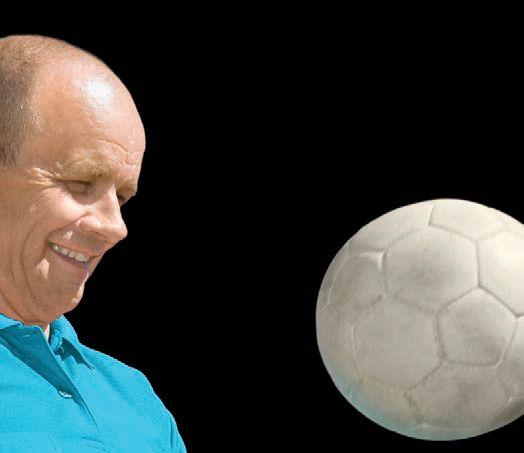








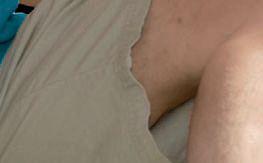



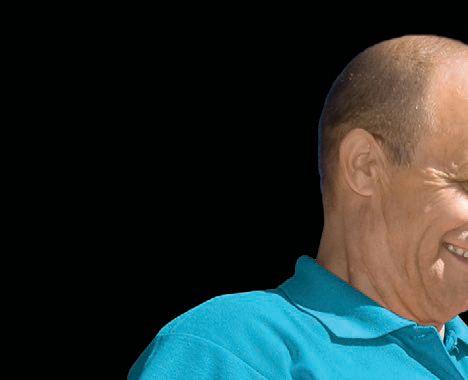














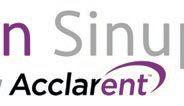


Taking time to develop a daily regimen of cleansing, hydrating, and protecting your skin may be vital in preventing acne scars, deep wrinkles, age spots, and skin cancer in the future.
“Early intervention is key,” says Dr. K. Wade Foster, of Florida Dermatology and Skin Cancer Centers, whose office in Leesburg is one of six locations.
He recommends the following daily precautions: avoid using tanning beds or sun lamps; wear protective clothing and sunglasses; use sunscreen and lip balm; and minimize sun exposure between the hours of 10am and 3pm, when the sun is the brightest.











“It only takes one skin cancer on your nose to make you appreciate the value of a broad-brimmed hat,” he says.


The board-certified dermatologist notes skin cancer is common in Floridians, especially those with fair skin, blue eyes, and red or blond hair; a family history of skin cancer; weakened immune systems; and who are older.


And while genetics plays a strong role, Dr. Foster says skin cancer can be detected in people who had chronic sun exposure, including the daily golfer or those with a history of severe childhood sunburns.
“When you’re young, you are invincible and you think skin cancer is never going to happen to you,” says Kim Bitting, owner and beauty consultant of Merle Norman Cosmetics in Leesburg.
“The most important thing about skin care is protection from the sun and starting younger, because 80 percent of skin damage is done before you are 60 years old,” she says. “It’s important to always wear sunscreen. Being in Florida, you can still get sun, but you want to protect your skin as much as you can.”
She advises using a broad-spectrum sunscreen for the best protection from ultraviolet light of two types: UVA (aging rays) and UVB (burning rays). UVA can prematurely age a person by causing skin to be wrinkly and leathery; UVB results in sunburns.
Your skin is your body’s largest and most visible organ, and experts agree that it deserves to be treated with care.
WRITER: THERESA CAMPBELL
Too much exposure to both rays may lead to skin cancer.














Kim is diligent about wearing sunscreen because her fair-skinned mother was diagnosed at 61 with melanoma, the most dangerous form of skin cancer. She died at 63.
“Mom went to Wildwood High School, and they had a senior skip-away day to Daytona Beach. We didn’t know anything about sunscreen back then. She got some areas of second- and third-degree burns from the sun,” Kim says.
Her mother was told the beach getaway probably was where her cancer began, followed by years of being a sun worshipper and working in the yard wearing terry-cloth rompers.
AndwhileFlorida’ssunnydaysandwarm temperatures often make it difficult to resist being outdoors to enjoy fishing, golf, boating, tennis, swimming, walking, and running, Kim says an SPF (sun protector factor) 15 sunscreen allows one to be in the sun about 150 minutes without burning.
“The higher the SPF number means the longer that you can stay out in the sun. A 30 to 50 does not mean that it gives better protection against the sun’s rays—it’s going to be the same strength,” Kim says, noting the higher SPF number simply means longer, not better, protection time from a sunburn.
“Of course, if you are doing a lot of activity or swimming, you want to make sure you reapply it as often as you can,” Kim says, adding the UVA rays are stronger in the winter months, so sunscreen is vital year round.
“Even on overcast days, you still need protection,” she says. “Forty-five percent of the sun’s rays can still get through the clouds and burn you or age you.”
In addition to sunscreen, Dr. Foster recommends an overall skin exam annually for adults, every six months for those who have had skin cancer, and every four months for those who have had multiple cancers.
He says early detection of skin cancer not only improves outcomes, but also save lives. The Florida Dermatology and Skin Cancer Centers specialize in diagnosing and treating skin cancers, including melanoma.
Treatment options for skin cancer include Mohs micrographic surgery, excisional surgery, and radiation treatments. These methods remove cancer cells, minimize the risk of recurrence, and offer the best cosmetic results, with minimal scarring and discomfort, he says.
Dr. Foster is fellowship-trained in Mohs surgery, which he noted offers a precise technique for removing cancerous tumors one layer at a time and minimizes the removal of normal tissue and reduces scarring.
And what can be done about age spots and acne?

Lentigines, or age spots, are not harmful, and are typically tan or brown in color and flat, according to Dr. Foster. They often are hereditary and can become darker with sun exposure.
They can be treated with intense pulsed light (IPL) or gentle cryotherapy, a freezing technique to remove the spots.

“IPL is the safest and most effective method of removing age spots and does not leave a scar. Photo-facials can also help,” he says, adding the treatments are available at the local center.
Kim believes exfoliating and using brightening ingredients like vitamin C products can be useful on age spots. Merle Norman has a vitamin C line, and she
says people can sample her company’s products before making a purchase.
“Aging is on everybody’s mind. Nobody wants to get old; they can age gracefully,” she says of adopting a good skin care routine. “After you exfoliate, use a good product and always use sun protection, because you do not want to undo what you are doing. And using a good retinol at night is always good. A good retinol, a good night cream, and a good eye cream is a girl’s best friend along with the sunscreen.”
She believes young women in their 20s should look into anti-aging products, and teens should be proactive when dealing with acne issues.
“We like to have the girls come in when they are like 13,” Kim says. “It’s a great age to start talking to them about skin care, because it will lead into talking to them about protecting the skin from aging, and the hygiene of facial care when they are starting to wear makeup.”
In dealing with acne, she notes there are sensitive-skin and acne-related products that can be used on the face without overstimulating or causing the acne to become worse or irritated.
“A lot of times when you get an acne flare-up, you really need something to calm the skin down,” she says, adding what is needed is a product to keep the skin clean and absorb excess oil, like a clay mask, which can keep the oil at bay.
“We have a product that has been in Merle Norman’s line since the ’30s called Miracol, and it is fantastic,” she says. “I used it as a teen and I have seen a lot of teens when they start to get acne. We put them right on that and they never have a problem—as long as they use it like they are supposed to.”
She says Merle Norman’s Miracol won one of the first Good Housekeeping seals of approval back in the 1950s for being a product that delivers.
“We do have a lot of acne-prone guys who use Miracol and they love it,” Kim says, adding it’s just as popular today as it was decades ago.
“A lot of dermatologist appointments aren’t covered anymore by insurance, so if you have a son or daughter experiencing acne or any kind of skin issues, they can come and get a skin assessment to see if there are over-the-counter products that will help,” she says.
Dr. Foster wants to debunk acne myths that have been around too long.

“The idea that acne is caused by eating too much chocolate or junk food is an old wives’ tale,” he says. “Acne is the result of high hormone levels and often starts during puberty.”

He says there are certain types of acne resulting from exposure to industrial oils or plastics that are in constant contact with the skin—like a violinist’s chin.

The dermatologist says acne can typically be treated topically with benzoyl peroxide-containing compounds, tretinoin-containing compounds, and antibiotics if red, inflamed lesions are present.
Tretinoin (a vitamin A derivative) blocks the formation of “whiteheads” and “blackheads,” but may cause mild side effects such as peeling skin or irritation. Severe scarring acne may require treatment with isotretinoin (Accutane), which also has potential side effects.
“Acne should be treated by a dermatologist to prevent irreversible scarring,” Dr. Foster says.

And since skin is constantly changing, Kim believes it’s vital for people to be vigilant about their daily skin care routine.
“The most important thing with men, women, boys, and girls is cleaning and protecting your skin,” she says.
Healthy skin tips:
•Stay hydrated: drink plenty of water.
•Maintain a balanced diet enriched with vitamins and minerals.
•Eat fresh fruits and vegetables, whole
•Avoid harsh soaps.
•Moisturize skin within a few minutes of bathing.
•Wear broad-spectrum sunscreen.































 Introducing Michael E. Burton, MD Cosmetic Surgery of the Body, Breasts and Face
Introducing Michael E. Burton, MD Cosmetic Surgery of the Body, Breasts and Face





















In the hands of a highly-skilled surgeon, the enhancement of the human form becomes part medicine, part art.

While training with world-renowned leaders in the field of Plastic Surgery, Dr. Burton also pursued a degree in fine arts, with advanced courses in figure drawing, painting, and sculpture.
As an international volunteer with Operation Smile, his skill and commitment to compassionate care led him to help children with cleft lip and palate deformities lead better lives.
Now, he’s bringing his skills to our offices in The Villages® to help you look as young as you feel.
It’s swimming and boating season in Florida! But before you make that first splash, please consider these important water safety tips that we’ve “pooled” together.
WRITER: JAMES COMBSThe warm weather that comes with April finally arrived.
For many Lake County residents, that means dusting off their swimming trunks and bathing suits and enjoying the area’s abundance of water-related recreational activities.
Some prefer the convenience of their home pool, where they can float lazily on a raft or enjoy an exciting game of Marco Polo with family members and friends. Others enjoy some fun in the sun at one of the county’s public lakefront beaches, such as Hickory Point in Tavares or Ski Beach in Leesburg. And some enjoy an afternoon of paddling or boating through our scenic waterways.
Water recreation is indeed a way of life here because it’s relaxing and enjoyable. But those who fail to follow simple precautions put themselves at risk for injury or even death.
In the United States, an average of 3,536 drowning fatalities occurred each year from 2005-2014, according to the Centers for Disease Control and Prevention.








That’s why Healthy Living is providing readers with valuable water safety tips. Simply put, we want you to stay afloat so you can stay alive.

Taylorrose Long worked two summers as a lifeguard for the recreation departments of Leesburg and Fruitland Park. To be hired, she had to undergo CPR certification training and complete a weeklong water safety course.
Fortunately for her, she never had to save a child or adult from drowning. But she did witness many swimming no-no’s that required constant correction: kids running around the pool, recklessly jumping off the side, and seeing how long they could hold their breath underwater.
“By being a lifeguard, I learned that the things I used to do around the pool as a kid are very dangerous,” says Taylorrose, a sophomore at Lake-
Sumter State College who hopes to become a registered nurse. “I think people tend to be lax when it comes to pool safety because they figure as long as they can swim, nothing can go wrong. That’s not true. While people should not walk on eggshells when they’re swimming, they should follow common sense precautions to avoid serious injury.”
Taylorrose, who lives in Lady Lake, offers the following pool safety tips:
•“Walk slowly in the pool area rather than run. When your feet are wet, you can easily slip or fall and injure yourself.”
•A lot of kids like to play chicken. This is a game where friends sit on each other’s shoulders and try to knock the other pair off balance. This could result in hitting your head on the side of the pool.”
•“Kids also like to wrestle and hold their wrestling partner underwater. This is dangerous because they do not know how long their wrestling partner can hold his breath.”
•“Get out of the pool and rest if you are feeling fatigued. We use every muscle in our




body when we swim, so it’s a health hazard to remain in the pool when we’re tired.”
•“Never let a child swim without constant adult supervision. This can help prevent dangerous events from happening.”

•“Don’t attempt to dive into the open part of an inner tube. You might not be able to flip the inner tube back over and get your head in the air.”
•“Don’t attempt to jump into a pool and land on a raft. The raft can fly out from under you and cause you to hit your head on the side of the pool.”
•“Don’t smoke around the swimming pool. Secondhand smoke can seep into the lungs of a child. The child then may start coughing and panicking and get water in his lungs.”
•“Do not drink alcohol and attempt to swim. You run the potential risk of becoming disoriented or passing out.”


•“Avoid attempting backflips off the side of the pool. My brother did that when he was younger and hit his head. He had to go to the hospital.”
•“Do not play near the ladder. If you’re underwater and the ladder snags your bathing suit, you won’t be able to come up for air.”
Lt. Brian Gamble, an emergency technician with Lake County Fire Rescue, explains how to perform CPR on a drowning victim:

•“Make sure the scene is safe. For instance, someone may die in a bathtub due to electrocution.”




•“Determine the victim’s level of unresponsiveness.”
• “Call 911.”


•“Determine if there are signs of circulation. For example, check for a pulse in the neck.”
•“Begin compression only if there is no pulse. Center your hands two fingers



above the bottom of the performing compressions with the heel of your hand.”
•“Perform one compression per second for a total of 30 compressions.”

•“When finished, tilt the victim’s head and lift his chin. See if there are signs of breathing. If the victim spits up water, turn his head to the side so water does not re-enter his lungs.”
•“If there are no signs of breathing, pinch the victim’s nose and place your mouth on the victim’s mouth. Give two breaths by breathing in and exhaling.”
•“If this is ineffective, perform 30 compressions again.”
Ginny Harrison is an American Red Cross-trained swimming instructor of 47 years. She and her husband, Jim, operate Swimming for Life, a Clermont-based ministry that provides swimming scholarships to impoverished and special needs children throughout Lake County, as well as to families who foster and adopt children.
Like most Lake County residents, Ginny is enamored with the county’s picturesque lakes. However, she urges anyone who goes for a swim to do so with caution. Here are a few of her expert tips:


•“Never swim alone. I always tell people, ‘Even when I’m fully grown, I never swim alone.’”
•“Anyone who cannot swim or is an average swimmer at best should wear a life jacket.”
•“Know your boundaries. Tell children they can only swim out to a certain point and cannot go beyond that point. Parents must have full supervision of children at all times because, at most lakes, there are no lifeguards.”
•“If you’re with a group of people, have someone blow a whistle on occasion so all swimmers can grab a partner’s hand. That way, a count can be conducted and everyone can be accounted for.”
•“Toddlers should be within arm’s reach of a parent. It only takes a matter of seconds for a toddler to go underwater, and nobody can see the bottom of a lake.”
•“Be wary of amoeba during the hot summer months when the water temperature is hot and the water level is low. They live in warm freshwater and can enter your body through openings in your nose and mouth. They then go to your brain.”
•“If you’re going to swim in a lake, I’d recommend swimming in public beach areas where there are more people, as opposed to swimming in a secluded lake. First, alligators tend to go away when there is lots of human activity in the water. Second, if anything happens, there will be more people to assist you.”





Speaking of lakes, we all know they are Florida’s most popular reptile, the alligator. While an alligator encounter can prove deadly, it’s not a go reason to shun our beautiful lakes. After all, there ha been only three alligator-related fatalities in Florida since 2007—and none of them occurred in Lake County. In other words, your odds of being on the wrong end of an alligator encounter are quite slim.
But, in the event you do come across an alligator, you need to know what to do.

Johnny Douglas of Wildwood is quite familiar with these reptiles. He spent 31 years as a trapper who removed nuisance alligators from local waterways. He offers some practical advice.


If you encounter an alligator on land? “You should run away, but do so in a zigzag pattern. Alligators run in a straight line for 30 feet and then they stop. Once you’ve gotten away, make sure to call the Florida Fish and Wildlife Conservation. Although it is a rare occurrence, if an alligator chases you on land, it has lost all fear of humans.”

If you encounter an alligator in water? “Be as still as possible at first and then slowly ease your way back to

















shore. If you move too quickly and start splashing, the alligator may recognize you as prey and begin chasing you. Plus, you cannot out-swim an alligator. If the alligator attacks you, then the best defense is to poke its eye sockets with your fingers. Oftentimes, alligators will release their grip once you do this.”
A valuable tip: “Don’t ever walk your dog next to the lake. Dogs are like prime rib to alligators. Throughout the years, I’ve trapped hundreds and hundreds of alligators that attacked and killed dogs.”

Kayaking offers one of the most relaxing and peaceful ways to explore our county’s vast waterways. Just ask Kenny and Jenny Body. The couple own Central Florida Nature Adventures in Eustis and take paddlers on trips through the Dora Canal, Haynes Creek, the Wekiva River, and other bodies of water.

“We take people out from all over the state,” Kenny says. “Because we live in a subtropical environment, we see all kinds of wildlife in their natural habitat. It’s also a very healthy activity because paddlers build muscles in their arms, legs, and core.”
Kenny offers some basic kayaking safety tips:
•“Don’t paddle at night by yourself. Alligators typically feed at night, and they’re also very difficult to see at night. I recommend everyone be off the water by dark.”
•“Avoid getting too close to overhanging branches. They are often places where wasps and other stinging insects live.”
•Beware of poison ivy. Paddlers exiting their kayak have a tendency to lean on a tree where poison ivy is growing.”

•“Always have bug spray. Otherwise, you’re a sitting duck if mosquitoes and deerflies are out.”
•“Keep your weight in the boat. If you start looking behind you while trying to take pictures, you lose center gravity and start tipping the kayak. I’ve seen people fall out of a kayak because they were taking pictures.”
•“Don’t bring Styrofoam coolers because you’ll lose everything if you tip. Instead, bring flip-top coolers and dry bags.”
•“When you are paddling, extend your elbow and put the paddle in the water out by your feet and bring it back to your hip. This is the best way to get maximum thrust and exercise.”
•“Never paddle further than your capability.”
Clermont resident Joe Goloversic has served five years as a member of Lake County Flotilla 43 Coast Guard Auxiliary. He particularly enjoys teaching eighthour boating safety classes.
“You’d be amazed how many people take the class who have been boating for 15 years,” he says. “They leave the class amazed at how many things they did not know about boating. Boating can be a very dangerous hobby if not managed and looked after.”
With 1,400 named lakes, Lake County offers ample boating opportunities. However, Joe highly recommends following precautions to avoid accidents and tragedies.
•“The most important thing is to prepare your vessel. Make sure the engine is well tuned, the fuel tank is clean with no moisture, and the battery is free of corrosion. When the boat is not in use, the battery should always be kept inside a case.”
•“Prepare a checklist to ensure you have all the necessary supplies. Those should include life jackets, first-aid kit, sunscreen, ice water, and food.”
•“Have a life jacket for everyone on the boat.”

•“Bring a boat hook in case someone falls out of the boat. Hand them the boat hook so you can pull them toward the boat. Never jump into the lake and try to save somebody. That’s the last thing you want because you now have two people overboard. And don’t think just because you’re a good swimmer that saving somebody is going to be easy. The environment of a lake is much different than a swimming pool. You have to deal with muck, wind, and plants.”
•Make sure navigation lights are working if you’re going to be out on the water at night. You have to have a single white light at the highest point in the vessel.”









•“Every boat should have a VHF radio. You can purchase them for under $100. There is not one blind spot in Florida where people cannot be heard on a radio. With a radio, an ambulance can be waiting for you at the dock if something bad happens. And if you or one of the passeng having a heart attack, having that radio can potentially be lifesaving.”
•“Always bring an air horn in case another boater is not paying attention to the rules of boating navigation.”








•“Always have a fire extinguisher on your boat and inspect it yearly.”

The Lake County Water Safety Advisory Committee will host Water Safety Day May 20. This year’s theme is “Do Your Part to Be Water Smart.”
The event is at multiple locations throughout Lake County, including Waterfront Park in Clermont, the Golden Triangle YMCA in Tavares, and the city recreational pools in Fruitland Park, Leesburg, Umatilla, and Mount Dora.
Members of various local agencies provide swim lessons, demonstrate CPR on mannequins, and perform a mock drowning rescue. Those agencies include the Lake County
Flotilla 43 Coast Guard Auxiliary and the Americ Red Cross.
“We want everyone to enjoy the abundance of water in our county, but at the same time, we want everyone to be safe,” says Stephanie Glass, who serves as staff liaison of the event. “This is a great opportunity for families to learn about water safety so they can have fun on the water instead of dealing with an emergency.”
For more information, contact Stephanie at 352.742.6511.
The Anterior Approach has been gaining popularity due to its numeras 20 percent of all hip surgeons are now performing anterior hip replacements. I have been doing the anterior approach for hip replacement surgery the results my patients have achieved.


TheAnterior Approach is an alternative to traditional hip replacement in which the hip is accessed from the front of the joint. A standard 10cm (4in) incision is made in the front (anterior) of the hip as opposed to the back (posterior) or side (lateral). The technique uses an interval between the muscles in order to limit injury to them during the course of the surgery. Leaving these muscles intact can limit the risk of dislocation after surgery, and may allow an accelerated recovery. Since the incision is in front, you’ll avoid the pain of sitting on the incision site.
The Anterior Approach is typically made possible with the use of a high-tech operating table that places the leg and pelvis in a stable position. This specially engineered table includes leg supports that allow the surgeon to adjust the operative leg during surgery with a great degree of control and precision. This table is designed to help achieve excellent alignment and positioning of the implant. Rather than being positioned on their side or stomach, the minimizes tilting of the pelvis during the operation. The table also gives excellent access to the femur, or thighbone, in order to position the stem of the implant effectively.
The procedure itself begins with exposing the hip in a way that does not detach muscles or tendons from the bone - a key attribute of the Anterior Approach. The diseased portion of the acetabulum is removed and replaced with a ti-
tanium cup. The surgeon then uses the operative leg so the foot points outward, excellent access to the thigh bone or femur, so the surgeon can replace the diseased portion of the bone with the stem implant. This is important since visability is often limited due to smallerincisions.Side-by-side TV screens are used to provide X-ray views of the operative hip and the patient’s opposite hip. This comparison gives information used to determine the desired position for an effective, stable hip replacement implant. The combination of this X-ray imaging and the high-tech table allows the doctor to seek precise control over the patient’s leg length as well.
The incision length, typically smaller than with standard surgery, varies according to a patient’s size,
Leaving these muscles intact can limit the risk of dislocation after surgery, and may allow an accelerated recovery. Since the incision is in front, you’ll avoid the pain of sitting on the incision site.
weight and other factors. The Anterior Approach lends itself to a relatively small incision because the hip joint is closest to the skin at the front of the hip. The muscle and fat layers are thinner than the muscle and fat tissue encountered when using other approaches on the side or rear of the thigh. While the smaller scar is a cosmetic advantage, surgeons say the actual size of the incision for each patient varies.
Another way that the Anterior Approach differs from some other techniques is with patient selection. With other procedures, patients may need to be at their ideal bodyweight, for example. The Anterior Approach may make minimally invasive hip surgery possible for a wider range of patients, including larger, heavier patients. That’s because the Anterior Approach enters the body closer to the hip joint, with far less tissue between the skin and the bones of the hip, so more patients may be candidates.
Your doctor will tell you what restrictions you will have after surgery, and every surgeon has his or her own set of precautions for you to follow. Some surgeons who use the Anterior Approach place fewer restrictions in the days after surgery because the operation cuts no muscles around the hip, allowing patients to get back to activities of daily living with fewer limitations. I place no restrictions regarding positioning of the leg after surgery.
Total hip replacement is considered the gold standard for hip arthritis and greatly improves the quality of one’s life. The Anterior Approach in one form or another has been around for many years. It can be performed safely and reproducibly with the use of the fracture table. More and more surgeons are learning this technique, and I believe it will continue to become more widespread as more long term studies are published.
However, ultimately it is a decision between the patient may be best for them.


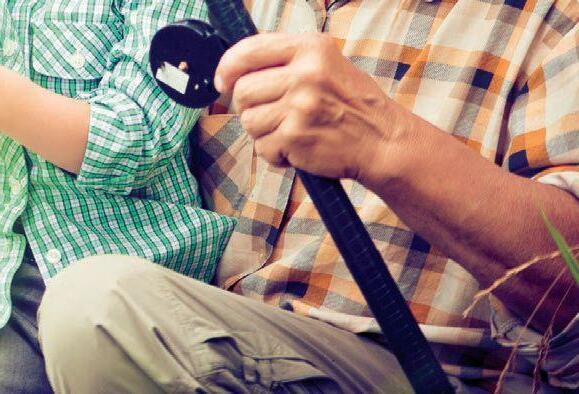
When you can’t move like you want to because of an injury or pain, it’s just no fun. That’s why at The Orthopaedic Institute we offer same or next day appointments to ensure you are treated as soon as possible. Once you are here, our goal is to take exceptional care of you. With everything from diagnosis to recovery in one state-of-the-art facility, our orthopaedic specialists are dedicated to helping you move like you used to. That’s why we opened a clinic conveniently located for the residents of The Villages® and surrounding communities.



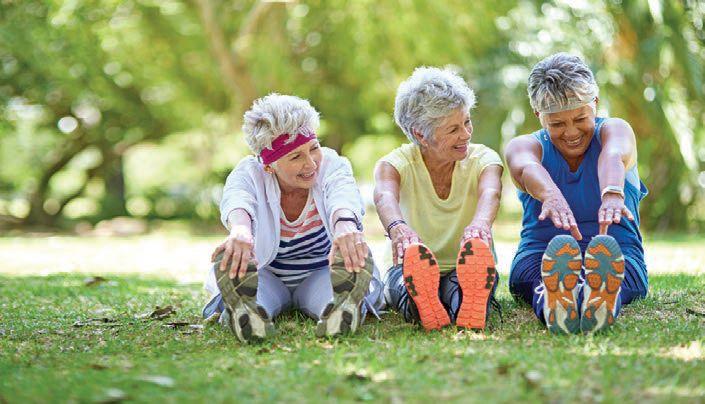
The modern summer camp offers a lot more than s’mores and ghost stories around the campfire. Today’s camps are both indoors and outdoors in a variety of venues, and they cover the gamut of activities from athletics to academics, technology to theater, and science to religion.
Lake and Sumter youth organizations, recreation departments, churches, and schools are busy planning another summer of fun for children of all ages.
Here is a sampling of this year’s summer camps:
The theater group offers a day camp through its Young People’s Theatre, the oldest continually running children’s theatre program in Central Florida. Students ages 7-18 learn dance routines, music and lines in performance classes that end with full-scale productions. Dates TBA, 109 N. Bay St., Eustis, 352.357.7777.
STORY: CHRIS GERBASIClubs at various locations will offer eightweek daytime programs from May 30-July 28 for children ages 6-18. The Umatilla Club, for example, participates in the library reading program, swimming at the city pool, mini-clubs for Lego and origami, field trips to bowling, movies, and the ice cream shop, sports and fitness competitions, guest speakers, and Summer Brain Gain, which is fun activities based around reading and S.T.E.M. Cadwell Park, 4 Cassady St., 352.669.1118.
Other locations include:
Teeter Club, Rogers Park, 610 S. 9th St., Leesburg, 352.787.0053; South Lake Club, Clermont Community Center, 3700 S. Highway. 27, 352.394.9840;
Northeast Lake Club, Lifepointe Church, 3551 E. Orange Ave, Eustis, 352.602.4861; Lady Lake Club, First Baptist Church of Lady Lake, 432 County Road 466, 352.259.6916; Spring Creek Club, Spring Creek Charter School, 44440 Spring Creek Road, Paisley, 352.669.3275 or 352.771.5204.
Lego day camps combine fun and education, with model building, games, and challenges specially designed for kids ages 5-12-plus. Each camp is one week long, full days or half days. Two locations: June 5-Aug. 11, First Presbyterian Church of Eustis, 117 S. Center St., 352.357.2833; Dates TBA, Montverde Academy, 17235 7th St., 407.469.2561.
Bushnell
The city has an annual day camp program that runs for six weeks from early June through July. Details TBA, 211 Southland Place, 352.793.3907.
A SeriousFun Children’s Network camp for ages 7-16 offers children with serious illnesses and their families a free, safe, and medically sound overnight camp environment. Sessions for up to 150 children include eight separate weeks, each designated for a specific illness or condition. Children enjoy nature trails, fishing, woodshop, tower climbing, morning swims, and evening campfires. June 8-Aug.
16, 30500 Brantley Branch Road, Eustis, 352.483.4200.
The day camp has an array of amenities, including a private beach on Lake Geneva that can be used for swimming, canoeing, paddle boating, and fishing, a swimming pool, zip line, archery tag, the “WaterBlob,” a type of trampoline, a low-ropes Challenge Course, lighted ball fields, soccer fields, four-way volleyball court, human foosball, gagaball, a 10,000-square-foot gym with basketball hoops and an auditorium that seats 1,000. May 29-Aug. 4, 36540 Via Marcia, Fruitland Park, 800.598.7013.
The overnight camp offers a place of retreat and spiritual renewal for Christ-centered church groups. Two teen camps for ages 13-17 and two junior camps for ages 8-12 are scheduled. Activities include swimming, canoeing, sailing, waterskiing and tubing, archery, rifle range, wall climbing, handicrafts, soccer, volleyball, basketball, games, drama, music,
nature, fitness, and Bible study. June 25-July 22, 7369 Sunnyside Drive, Leesburg, 352.728.5822.
This overnight camp for Boy Scouts ages 11 and older has two Lake Norris waterfront areas with docks, an aquatics program, a climbing wall, two swimming pools, shotgun, rifle, and archery ranges, a health lodge, a baseball field, amphitheater, basketball court, bouldering wall, dance arbor, and the Florida Trail. Adventure expeditions include Big Stump, a 12-foot cypress stump, an Orlando-area attraction trek, Eagle Week, scuba diving, climbing, caving, kayaking, sailing, and trail biking. June 4-July 15, 41940 Boy Scout Road, Paisley, 352.669.8558.
This day camp is filled with exploration from art to sports and games to academic work in the Montessori classroom. Families may choose to register for weekly programs, including
Animals Week, Survival Week, Crazy Crafts, and more. For ages 2-12, and campers don’t need to be enrolled at Lake Montessori to participate.
June 5-July 28, 415 Lee St., Leesburg, 352.787.5333.
The school offers training in musical theater and show chorus for children ages 6-17. Summer classes will focus on “Alice in Wonderland Jr.” and include a one-week show chorus class culminating with a showcase performance. June 5-16, 305 N. U.S. Highway 27, Suite D, Clermont, 407.319.3992.
UCLA soccer coach Amanda Cromwell hosts this overnight camp for girls ages 10-17 from around the country.
Athletes will be grouped according to their age and ability so they can receive the best technical and tactical instruction from top coaches within individual, small group, and team settings. July 9-12, National Training Center, 1935 Don Wickham Drive, Clermont, 310.206.2269.
Dreamcatcher Horse Ranch Rescue Center
Three day camps for different ages and abilities teach children about safety around a horse, grooming, bathing and braiding, horse anatomy and breeds, riding in English or western disciplines, arts and crafts, and outdoor games like rope the steer, barrel racing and pole bending in weeklong sessions.
June 12-Aug. 4, 10639 Toad Road, Clermont, 407.702.8332.
Weeklong fully accessible camps for children and adults with disabilities or special needs. Overnight camp is for kids ages 6 and older and adults of all ages with disabilities or special needs, and day camp is for school-age children with mild to moderate special needs. Activities include zip lining, swimming, archery, dancing, sports, music, and drama. June 11-July 22, 31600 Camp Challenge Road, Sorrento, 352.383.4711.
The city’s Recreation Department is hosting two camps, one at its main office and another called Sunset Island. Campers take trips almost daily for swimming, bowling, roller skating, movies, trampoline park, Crayola experience, water slides,
parks, ice cream shop, and Bay Street Players. June 5-Aug. 4, main office, 2214 E. Bates Ave.; June 12-July 20, Sunset Island camp, Eustis Service Center, 301 W. Ward Ave. The department also offers oneweek specialty camps for basketball, cooking, flag football, art, and volleyball. Dates TBA, 352.357.8510.
Children learn life skills such as discipline, respect, and focus in a positive, supportive environment, all while having fun. Every day is full of games, learning, and activities. No age limit. Dates TBA, 3755 Lake Center Drive, Mount Dora, 352.383.0898.
Clubs and organizations may book stays at this full-service retreat with two camp areas that can
hold up to 260 guests in bunk-style dorms. Open throughout the summer. 39034 County Road 452, Leesburg, 352.483.9800.
The city’s Recreation Department holds sportspecific clinics for children throughout the summer. Dates TBA, 352.728.9885.
Minneola
The Extended Learning Center at Minneola Elementary Charter School has a day camp that explores college and careers, incorporating reading and math skills, sign language, Spanish, crafts, the Presidents Club, science, dance, tumbling, cooking, computers, and scrapbooking. Starbound Performers demonstrate dances, and Young Rembrandts lead drawing classes. June 13-Aug. 17, 320 E. Pearl St., 352-394-2600.
The city’s Parks & Recreation Department offers KidzQuest Summer Survivor Camp for ages 5-10, and Middle School Mayhem Camp for ages 1114. A free lunch program is available a portion of the summer. May 30-Aug. 4, Mount Dora Middle School, 1405 Lincoln Ave. The department’s British Soccer Camp includes innovative practices and games, cultural education, and character building for ages 3-14. The coaching staff will teach foot skills, fakes, moves, and turns, freestyle soccer, technical and tactical instructions, and small-sided games. June 26-30, Frank Brown Sports Complex, 1245 Pine Ave., 352.735.7183.
Theater, dance and music day camps include two separate two-week intensive programs,
one for ages 7-12, the other for ages 12 and up, both concluding with performances at Moonlight Theater; a one-week fun camp, including art, music, dance, and drama, for ages 3-6; and a one-week intensive ballet program for ages 7 and up and all skill levels. June 5-Aug. 4, 735 W. Montrose St., Clermont, 352.432.3971.
Compass Creative Dramatics conducts a weeklong day camp for students entering first through eighth grades. Students work with professional actor/directors on an adaptation of “The Wizard of Oz.” All students are cast in roles.
They also participate in workshops to learn about acting and theatre. The camp culminates with stage performances at The Sharon. June 5-10, 1051
Main St., The Villages, 352.751.7799.
Daytime programs for ages 5-17 offer homework assistance and academic enrichment, recreational and social activities, field trips, community service opportunities, Kids College computer lab, arts and crafts, athletic fitness, basketball, and bus service from schools to centers. June-August. Two locations: 841 E. CR 48, Bushnell, 352.568.8722; 406 St. Clair St., Wildwood, 352.330.0067.
The Recreation Department’s day camp for ages 5-10 consists of three separate sessions, each lasting three weeks. Each session is themed and action-packed with field trips, activities, special presenters and
amazing surprises. June 5-23, June 26-July 14, July 17-Aug. 4, Ingraham Center, 317 S. Ingraham Ave., 352.742.6370
This faith-based site on Lake Griffin offers day, overnight, and trip camps for elementary, middle school, and high school students. Activities include zip-lining, tubing, yoga, sailing, crafts, archery, swimming, canoeing, a team-building challenge course, and Bible studies. Trip camps for high school students include canoeing on Suwannee River and Wilderness Week. June 5-July 28, 4990 Picciola Road, Fruitland Park, 352.787.4345.
The organization’s ninth annual Royal Historical, Enrichment & Art Program
provides a safe environment for children while they learn and have fun. Past workshops focused on subjects such as youth banking, baton twirling, visual arts, and AfricanAmerican heritage.
The free program is open to school-age children. Lunch and snacks provided. Tuesdays through Thursdays, June 27-Aug. 3, 9569 County Road 235, Wildwood, 352.748.0260.
The Y conducts day camps with themes and activities such as swimming, canoeing, archery, riflery, and arts & crafts, as well as Camp Wewa, a resident camp for children ages 6-14 designed to build new friendships, develop outdoors skills, and teach athletic, camping, artistic, and leadership skills. June 4-July 28, Golden Triangle, 1465 David Walker Road, Tavares, 352.343.1144;
Two of the more unique summer camps in the region span generations.
Camp Villages, an intergenerational camp for kids, parents, and grandparents to share together, continues to grow in its 17th year in The Villages.
Organizers add new activities and extra sessions each year. A ninth week was added two years ago, and Camp Buckaroos, for youngsters 3 to 6 years old, was created in 2014.
New ideas were considered during the winter planning stages of the camp, says Lisa Parkyn, lifestyle events manager for The Villages district and one of the camp coordinators.
“We’re branching out and partnering with some new resident lifestyle groups,” she says, referring to the various clubs run by Villagers. Thirty resident groups, totaling 577 volunteers, helped with last year’s camp.
More than 4,000 children are estimated to participate in the camp’s 80-plus activities, which include sports, scrapbooking, gardening, kite-making, belly dancing, hula hooping, and much more.
Camp Villages has become so popular, the Recreation Department puts on small-scale versions during holidays and school breaks, when more kids are in town and activities can be tailored specifically for them, Lisa says. Easter Camp Villages, for example, is scheduled for April 10-13.
This summer’s Camp Villages runs from June 12-Aug. 11. For information, call 352.674.1800 or 352.753.1716.
South Lake County, 1300 Fosgate Road, Minneola, 352.394.7243.
Children will be transported to another time and place during the sixth annual Pioneer Day Camp at Dade Battlefield Historic State Park, an authentic 1800s period camp for youths ages 8-12. During the one-week camp, kids experience historical living from soap making to milking cows, and interact with farm animals such as sheep, goats and chickens.
“It’s very hands-on,” says Park Ranger Kristin Wood, who has organized the camp since it began in 2012. “That’s a big reason it’s popular and why they enjoy it so much.”
The kids of today love learning about Florida life of the 1800s, as they trade in modern electronics for wooden toys of a bygone era, she says. The campers also play marbles and jacks, learn how to walk on stilts, and compete in sack races and tug-of-war.
“It’s a novelty for them,” Kristin says. “If you can tear them away from video games, it’s great.”
One of the more popular days is Food Day, when campers eat what they make after milking cows, shelling peas, husking corn and cooking other items for their meal. They also learn about American Indian life and the Second Seminole War, re-enacting the battle fought at the site for their families and friends on the last day of camp.
Pioneer Day Camp is scheduled for June 5-9 at the park, 7200 County Road 603, Bushnell. Attendance is capped at 50. The park also hosts Nature Days, July 17-21, a day camp exploring animals, plants, birds and insects.
For information, contact kristin.n.wood@ dep.state.fl.us, call 352.793.4781, or go to floridastateparks.org.
EACH YEAR, MORE THAN 14 MILLION CHILDREN AND ADULTS ATTEND CAMP IN THE UNITED STATES.
CAMPING IS AN $18 BILLION INDUSTRY.
MORE THAN 14,000 DAY AND RESIDENT CAMPS OPERATE IN THE UNITED STATES
8,400 ARE RESIDENT (OVERNIGHT) CAMPS, AND 5,600 ARE DAY CAMPS.
NONPROFIT GROUPS, INCLUDING YOUTH AGENCIES AND RELIGIOUS ORGANIZATIONS, OPERATE ABOUT 11,000 CAMPS, AND 2,500 ARE PRIVATELY OWNED, INDEPENDENT FOR-PROFIT OPERATORS.
CAMPS EMPLOY MORE THAN 1.5 MILLION CAMP STAFF MEMBERS. NEARLY 20 PERCENT ARE FROM OTHER COUNTRIES.
Source: American Camp Association

















“Some sunshine is good for the soul, but I always make sure I wear a big hat.”
—Miranda KerrWRITER: RICHARD T. BOSSHARDT, MP
If you have a sedentary job, it is enough to exercise regularly.

Myth: It is not enough to exercise regularly, or even daily. Studies show that prolonged periods of immobility, whether sitting or standing, create a risk of sudden death six times that of people who move continuously in their jobs. This is independent of exercise. To counteract this, many people are turning to such things as standing desks, instead of sitting at a desk in a chair. There are apps for your cell
phone that tell you to periodically move, stretch, or simply change position. The goal is to move around more or less continuously throughout the day.
As long as you feel OK and have no restrictions in your activity level, you probably don’t need to worry about heart disease.
Myth: The first sign of heart disease may be a heart attack, stroke, or sudden death in as many as one-third
of people who have heart disease and don’t know it. If you have a history of heart disease in your family, high blood pressure, diabetes, are overweight, or have elevated cholesterol levels, have a regular checkup with your primary physician. If there is any question, there are noninvasive tests, such as a cardiac PET scan, stress test, and others that can identify persons at risk. The time to begin a heart healthy lifestyle is before you experience a cardiac event.
“Truth will rise above falsehood as oil above water.” —Miguel de Cervantes
You need to drink eight glasses of water daily.
Myth: You need to stay hydrated, but there is no need to walk around all day sipping water, as some people do. You get water in the foods you eat and that counts, too. The way to stay hydrated is drink when you’re thirsty and monitor your urine color. Assuming you have normal kidneys, your urine should be light yellow to almost clear. If it is dark yellow, you are dehydrated and need to drink. Don’t use sodas or even fruit juices for hydration because of high sugar content. Beverages with caffeine, such as coffee and tea, are the best because they cause your kidneys to excrete more water. Alcoholic beverages should never be used for hydration.
Sugar from natural sources, like fruits and honey, is healthier than refined sugar.
Myth: Sugar is sugar. Pure, refined cane sugar is devoid of nutrients whereas natural sources may contain some beneficial factors, such as antioxidants, vitamins, minerals, etc. Even so, too much sugar from any source is not good for you and can contribute to problems—heart disease, obesity, diabetes, and so on. It is better to avoid refined sugar and get natural sugars from whole fruits rather than juices. The fiber in fruit slows absorption of sugar in your gut and prevents sugar spikes in your blood and slows down insulin production. If you want to drink your fruit, use a blender to get the juice, pulp, and, when possible, the skin. The latter is where most of the fiber and many nutrients are.
You can eat prepared foods as long as it says 0 grams of trans fats in the list of ingredients.
Myth: This is one of the most dangerous myths. No amount of trans fats (a type of fat that is not found naturally in food and is created by heating or added to foods to increase
shelf life) is safe to consume. Trans fats damage cells and can cause all manner of health problems. Food labeling laws allow manufacturers of foods that contain less than 0.5 grams of trans fats per serving to list their content as zero. If it is fried, baked, or contains any form of hydrogenated or partially hydrogenated fat, it contains trans fats, no matter what the label says.
Choose low-fat alternatives in the foods you buy.
Myth: Low fat usually translates to more carbs, and current research indicates carbs may be a bigger problem than fats ever were. Many manufacturers add salt and sugar to make low-fat products tastier. Research shows it is the type of fats you eat that matters, not whether you eat fats at all. You need healthy fats in your diet. Vegetable and nut oils—olive oil, walnut oil, and avocado oil—all are excellent choices for cooking and use in salads. Even saturated fats, such as found in animal and dairy products, and nuts such as coconuts, can be part of a healthy diet as long as other aspects of the diet are in good balance.
The best diet is the ___________ (fill in the blank with your choice: Atkin’s, paleo, Mediterranean, Ornish, South Beach, Macrobiotic, Hallelujah, etc.)
Myth: There is no perfect diet that suits everyone. Many factors, such as lifestyle, genetics, age, sex, personal health history, and more play into whether a particular diet is optimal for you. The best diet provides necessary nutrients, enough calories to maintain a healthy weight, and maximizes your health potential. It must not be so complicated that you need a degree in nutrition to follow it. Not least, it must be enjoyable and varied enough you will not tire of it. Too many people focus obsessively on their diet to the exclusion of other important factors,
such as being active, reducing stress, getting enough sleep, and eliminating unhealthy habits. Overall health is not achieved by finding the perfect diet. It is the consequence of daily, conscious decisions and actions that move toward better health.
If you want to see your future health situation, just look at your parents, since you have their DNA.
Myth: One thing we have learned is that people are not necessarily locked into whatever their DNA is programmed for. Just because your parents died early, or lived into their 90s, had cancer, or heart disease, or were subject to an addiction, does not mean you will. Now, we speak of factors that can modulate the expression of certain genes in our DNA. This is why lifestyle choices become so important. We don’t really know, in most cases, what causes a specific segment of your DNA to be expressed or not. Just do your best to keep up with advances in medicine and try to follow the tenets of a healthy lifestyle. Your primary physician is a great source of information
Once you get old, it is too late to try to reverse aging changes to your body, acquire new skills, improve your memory, or make other fundamental changes to your life.
Myth: If studies have shown one thing, it’s that it is never too late to make changes to benefit your health. Even people in their 90s can learn new skills, increase their strength and mobility, improve their memory, and even reverse such things as narrowing of the arteries that supply their heart muscle. Of course, it is also true that the earlier in life you begin, the greater the rewards you reap from whatever changes you make. So, the ideal is starting when you are young, but never assume it is too late to make positive changes.

Everyone knows protection is needed for long exposure to the sun’s harmful rays, but do you know being in the sun also provides healthful benefits?
While the dangers of getting too much sun have been widely reported, researchers also have looked more closely at the many advantages of being in the sun for short periods. Excessive exposure to UVA rays can lead to DNA damage and skin cancer, and so can an overdose of UVB rays, which cause sunburn. Both types of rays also deplete your skin’s vitamin A supply, damage collagen, cause cataracts to develop, and make you look older by speeding the skin’s aging. But sunlight in small doses may have benefits.


Vitamin D is produced when solar UVB rays hit your skin. The vitamin helps prevent cancer, aids immune and neuromuscular systems as well as calcium metabolism, wards off heart disease, and keeps bones strong. About 75 percent of U.S. adults and teenagers are vitamin D deficient, according to the National Library of Medicine. A normal vitamin D reading is between 30.0 and 74.0 nanograms per milliliter (ng/mL). If you’re afraid of cancercausing rays, you may tend to stay indoors or cover up. While understandable, it is not recommended. Getting five to 10 minutes of unprotected exposure every day is relatively safe for the average person and provides this vital nutrient. Howver, light-skinned people should avoid getting too much sun.
Do you feel happier on sunny days? Long days of sunlight increase levels of serotonin, which is a hormone that improves your mood. Mental health professionals even recommend 30-minute periods of sunshine each day
to patients who suffer from depression. So go for a walk, lounge by the pool, or play yard games with the kids each day to get your vitamin D fix and a healthy pick-me-up.
Sunlight slows the body’s production of the hormone melatonin, which helps induce sleep. Healthy amounts of sun can help regulate your sleep cycle so you sleep better at night and feel rested during the day. Again, get outside when you get up in the morning and catch some rays to help perk you up. Leave the sun block, sunglasses, and other coverings behind so your body can absorb the sun’s rays. It’s especially helpful to leave your eyes uncovered— but don’t look directly at the sun because this allows sunlight to penetrate them and signal to the brain that it’s time to stop making melatonin.
Certain behavioral problems linked to dementia may be relieved by adjusting the lighting, reported a study published in a 2008 issue of the Journal of the American Medical Association. When compared with study participants exposed to dim light, Alzheimer’s patients who got doses of bright light during daylight hours performed better on a mental exams, suffered fewer bouts of depression, and retained more functionality. Participants on melatonin, however, became more withdrawn. Don’t be afraid to soak up some sun! While you shouldn’t spend hours outside without protecting your skin, you should venture out for short periods during the day to help reap the important benefits of sun exposure. You just might find that you feel happier, healthier, and more rested.







The police call it a BOLO—be on the lookout, and that’s what you must do when you among the lush foliage where poison ivy blends in so well.
Setting out for a week of camping in the woods or settling in for the summer at the cottage can bring excitement and adventure, but it also can bring problem that ruin your time away. Being prepared to manage basic medical events may save your summer. With a little awareness and some supplies in the backpack, you can treat a mild case poison ivy successfully on your own.
Poison ivy is the plant identified by the age-old phrase “leaves of three, let it be.” While a keen eye can identify it, keep in mind when you are cleaning up an area of shrubs, poison ivy may be within the larger brush. Others may not know what to look for and come in contact with the plant while hiking or gathering kindling. If contact occurs and a rash develops, the classic symptoms are red, rough, raised, vesicular lesions that ooze, itch, and cause general discomfort. They will be anywhere the body touched the plant, as well as areas that came into contact with contaminated hands or clothing. Always wash your hands and all clothing that comes in contact with poison ivy oil.
Treatment is generally simple. Wash the area with soap and water and apply calamine lotion for the itch. Cool compresses provide some symptomatic relief, but to really settle the redness and itchiness, a hydrocortisone cream works well. While low-dose hydrocortisone creams can be purchased over the counter and are a good place to start, if they don’t relieve the symptoms, a medical visit and possibly a prescription-strength cortisone cream may be needed. Oral antihistamines also may help relieve the body’s reaction; however, if there are any signs or symptoms of a major reaction such as difficulty breathing or swelling of the eyes or lips, seek emergency attention immediately.
It also is important to monitor the rash for signs and symptoms of a possible secondary bacterial infection due to opportunistic bacteria that may infect within the rash. Infection often is caused by bacteria under the fingernails being transmitted by itching. Though it may seem impossible, avoid scratching. Signs of infection include worsening redness, pain, swelling, and discharge. For this, seeing a doctor is advised. Additionally, go to the doctor if the rash is around the eyes or genitals. You may need oral steroids only a doctor can prescribe.
Keeping a tube of hydrocortisone cream and calamine lotion on hand while away from home may allow you to treat a minor case of poison ivy. Reviewing pictures of poison ivy before heading out for a trip or, even better, keeping a small book of local plants on hand to review, may also help avoid this aggravating plant.











“Anxiety is the dizziness of freedom.”
—Soren Kierkegaard
Life in the 21st century is busy. Good business requires goals, deadlines, and results. Maybe it’s time to slow down and Zen.
Are you constantly rushing, trying to do one task and then the next? If so, you might experience anxiety due to the pressure of relentless doing as opposed to being. Not getting enough downtime leaves you stressed, and finding peace and calm in the middle of business is challenging. However, there are ways to add a little Zen to your life.

Many of your worries stem from looking ahead to tasks you’ve yet to carry out. You anticipate results, often with worst-case scenarios in mind. Doing so puts you in fight or flight mode, lowering your immunity and joy. When you live in the moment, there’s less to worry about, and you have more energy to put into what you are doing.
To be present more, you need to notice your mind wandering to the
future and bring it back to the current time. You might create a mantra, like “I pay attention to this moment,” and use it whenever thoughts about coming events arise.
No doubt, you question your competence and fear whether the tasks you undertake will bring you what you need. You may worry about earning money and being seen in a good light, or you may be anxious for other reasons. Practice karma yoga, and you won’t feel stressed about such matters.
Karma yoga is referred to as selfless service because when you practice, you put your thoughts and energy into serving rather than feeding your ego. Your ego tells you to pursue fame and riches, and gain as much as possible. However, when you drop your ego to achieve a goal, your efforts are unconditional. Focus on
serving rather than what you might gain and stress will leave.
When you need more Zen in your life, and stress threatens to overwhelm you, become mindful of each action you perform. As you engage in movements, become aware of how your body feels. Notice the sensation of breathing, stretching, and walking. Focus on tasks, let unwanted thoughts pass, and you will feel peaceful. Take each moment as it comes, allowing it to unfurl without the need to control anything. Keep bringing your attention back to experiencing your actions.
Whether you’re at home, work, or about to drive your car, you can prepare reminders to be calm. Cues for Zen are signals to the brain, letting you know it’s time to let go of stress. Such prompts remind you to be
mindful and practice karma yoga if concerns abound.
Use cues you associate with calmness, such as printed affirmations or lavender oil. The prompts that work best for you will mentally transport you to the sensation of peace and may be personal to you. Thus, a crystal pendant, amethyst keyring, purple velvet cushion, or favorite piece of music might do the trick. Think about what you can carry with you or place somewhere prominent that’s linked with serenity in your mind.
When you’re terminally busy, you need more Zen. You can reduce stress and increase calmness by staying in the moment. Practicing karma yoga and completing tasks with service in mind will help you accomplish your goal. If you also are mindful, focused on activities, and have cues set up for Zen, your worries may vanish.






You’re always in a corner alone at a party. You prefer being alone to being in a group. It’s not uncommon, and there are ways to make it better.
The feeling of discomfort associated with embarrassing or uncomfortable social situations is familiar to many people. However, some experience these feelings on a consistent basis. In this case, those feelings are identified by the mental health community as some form of social anxiety, aptly named social anxiety disorder or SAD.






People who suffer from social anxiety are afraid of being judged by others, making it difficult to have genuine social interactions. The fear usually sparks from their expectations of rejection, embarrassment, or humiliation. The assumptions are usually unfounded. Not surprisingly, people who suffer from SAD do not take criticism well, which intensifies their feelings of insecurity. It is interesting to note that every healthy child goes through a phase of social anxiety, but this is a normal stage of development for the human brain. Nonetheless, social anxiety in adults can be overwhelming and affect every aspect of their lives.
When the effect of social anxiety in adults is strong enough to impair their ability to function in society, it is classified as SAD. However, this is only one of many different forms of anxiety disorders, and one of the most prevalent in the United States—affecting an estimated 12 percent of the population. Unfortunately, social anxiety disorder doesn’t simply impact a person psychologically; the physical effects associated with an uncomfortable social interaction are plentiful and vary from cold sweats to constant, uncontrollable blushing, and even nausea. Many people attempt to self-medicate with substances like marijuana, alcohol, cocaine, or other things that give false confidence. This may lead to other mental health issues and further damage to brain functions.
Social anxiety is commonly associated with unnaturally low levels of serotonin, an essential neurotransmitter, which many mental health professionals believe is responsible for happiness. Increasing serotonin levels potentially can reduce the symptoms of SAD. These levels can be artificially increased by taking prescribed medication or over-thecounter products, such as 5-HTP, a chemical in the body that can help increase serotonin production. This chemical is found in the vitamin aisle of any major drugstore. The main alternative treatment is therapy, more specifically, cognitive behavioral therapy. Both treatment methods are significantly effective in reducing social anxiety symptoms over time. In severe cases, antidepressants may need to be prescribed by a doctor.
SAD wasn’t regarded with much interest by the American Psychological Association until the turn of the millennium. Nonetheless, the understanding of this mental disorder has increased tremendously. Armed with new scientific information, psychologists may be able to reduce—and, in some cases, eliminate—the symptoms of SAD in a perpetually growing number of patients.







pH8.3
Our water is fresh, native, balanced, pure spring water and is guaranteed to be 100% bottled from the source without any artificial modifications or alterations to acquire its unique and special qualities.
ALKALINE SPRING WATER HAS ITS UNIQUE BENEFITS AND A CLEAN REFRESHING TASTE:

• Super Hydrating & Detoxifying
• Boosts Immune System
• Anti-Oxidant/Anti-Aging
• Improves Digestion
• Increases Energy

• Replenishes Essential Minerals
• Enhances Circulation & Metabolism
















“Computers are useless. They can only give you answers.”
—Pablo Picasso
Nature supplies great wisdom, demonstrating it right under your nose if you don’t miss it when your mind’s on other matters. Don’t spend so much time in your head that you forget what’s happening in front of you. Stop worrying, and you may see how to solve even your greatest problems. To experience self-growth, slow down and watch nature’s insights unfold.
The spider diligently weaves a web so it is strong enough to weather most storms. If it breaks, however, she confidently rebuilds it. No worry about her first efforts failing. Nor does she give up because it might happen again.








People, however, often respond to setbacks by mulling over problems until they become insurmountable. Obstacles make success inaccessible and dreams will never be achieved. There are those, though, like the spider, who push a little further and spend just 10 minutes a day working toward a goal, seeing the challenges as part of the plan so they eventually realize their dream.
How many terms describe groups of wildlife? Teams, packs, flocks, herds, and various other terms acknowledge the need to be together. There’s safety in numbers, but many people forget friendship is just as important as security.
People who are isolated become lonely and unwell. Their mental and physical condition declines because there is no support system. Depression sets in, and they struggle to cope with life. People active in their local communities, and develop social networks, are healthier and may live longer. The practical help they give and receive is useful. There is less stress because they don’t worry about managing alone.


Watch a wild deer leap for joy because it has found a meadow, or a bird sing when the sun warms its feathers, and you know these creatures are designed to enjoy everyday wonders. Humans dance and sing, expressing joy as well, but they usually need an occasion to celebrate.
Everyday wonders, like rainbows, stars, the morning dew on the grass, and the sound of laughter are reasons to jump for joy. People witness these regularly, but don’t notice them fully.
Those who focus on positivity, though, open their eyes to small miracles, the kind others don’t see. Uplifting energy creates feelings of gratitude, love, and compassion. As a result, they are happy and optimistic.
There are many lessons nature can teach you. Trees, leaves, plants, insects, clouds—all aspects of the environment provide teachings. If you want to expand your awareness and understand more of life, engage in self-growth by observing nature’s free wisdom.

































While technology is a wonderful way to stay connected, it can also be too distracting. It might be time to let it go, as the song says.
As technology continues to advance at an unprecedented rate, stepping away from electronic devices is becoming increasingly difficult. Taking a break from the digital world, however, is necessary from time to time if you want to live a healthy and fulfilling life. The overuse of technology may lead to reduced communication skills, loss of sleep, increased social anxiety, and even depression. Check out these five reasons to turn it off for a while.
Many people today are unknowingly addicted to checking their phones, email accounts, and social media profiles. Doing anything in excess can lead to unhealthy habits. By taking a break from technology, you empower yourself to get your checking habit under control. Once you realize you can live happily without devices, even for short periods of time, you’ll feel more confident doing so in the future. The more control you have over habits, the better you feel.

The average person today spends roughly eight hours a day using digital devices. With even a fraction of that time taken back, what could you accomplish? By taking a break from technology, you may have free time you don’t know what to do with. This extra space in your life could help you enhance your personal relationships, find a new hobby, have an exercise routine, or do anything else you’ve been wanting to do.
These days, when you see something interesting or beautiful, it’s easy to instinctively reach for your mobile phone to catch it in a photo or video. This puts the focus on capturing a moment instead of simply experiencing it. Next time, avoid reaching for your device. Take a few deep breaths and truly experience what’s happening around you.














People often find they’re able to streamline digital technology use after they step away from it for a while. When taking a break from devices, they can clearly evaluate which ones truly benefit them, as well as those that don’t. While doing this, you may find you don’t miss certain devices and types of digital media, which frees up more space for those you enjoy more.
Sleep can be adversely affected by technology use. Using your devices within an hour or two of sleep may disrupt your body’s ability to truly relax and get the rest your body and mind require. The feeling that you need to check your devices for messages, emails, or any type of update before sleep also may lead to poor rest, as it forces you to think about things that can wait until morning to be resolved.
Cutting digital devices out of your life for even a short period of time may help you experience great benefits. Experiment with a digital sabbatical today and see what it does for your happiness, productivity, and overall well-being.
She was born 4 months early and spent more than 5 months in the hospital.


Sponsors to come me




“Death, taxes, and childbirth! There’s never any convenient time for any of them.”


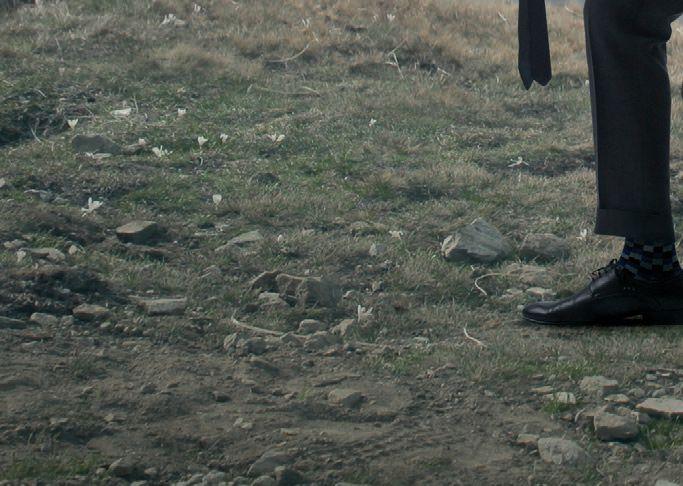



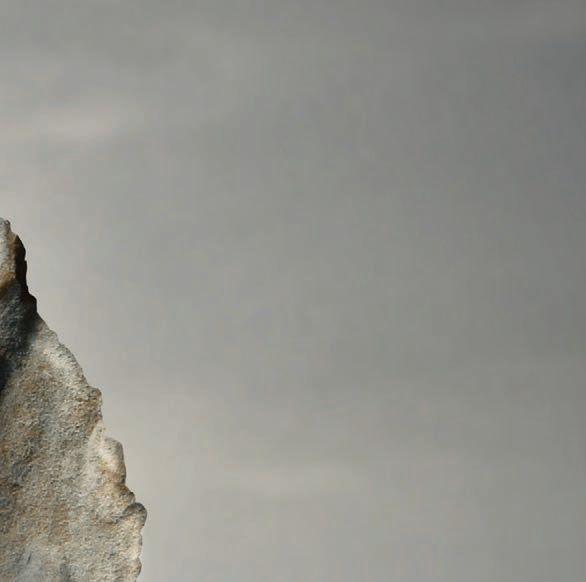




—Scarlett O’Hara from “Gone with the Wind” by Margaret Mitchell



The tax code is complicated, and it just keeps getting more difficult with every passing year. The rules and regulations that govern IRS operations total tens of thousands of pages, and every new legislative session just adds to that total.
WRITER: B.D. CONRAD
There is not much you can do to make doing your taxes less complicated, but there is plenty you can do to reduce your burden and stress level. If your tax situation is complicated, it may be time to seek the help of a professional. A good tax preparer will help you identify deductions you may have missed, explain the complicated IRS rules and regulations, and make tax time less taxing. Not all tax preparers are equally skilled, and finding the right one is not an easy task. Knowing what to look for in a tax preparer is very important, and here are six essential qualities to find when seeking professional help and guidance.
A good tax preparer will have a strong interest in tax legislation and an in-depth understanding of how those rules apply in the real world.
A tax preparer who has worked for the IRS may have a better understanding of how the system actually works and will be able to use that knowledge for your benefit.

The tax code is always changing, and the most experienced tax preparers have seen the rules come and
go. Experience level matters in tax preparation, so look for a professional with a strong track record of success.

The tax code can get pretty complicated, but a good tax preparer can break things down into easy to understand terms.

While price should not be your only consideration when hiring a tax preparer, you want a professional who charges reasonable fees. Keep in mind that a good tax preparer can pay for themselves by helping you find additional deductions and boosting the size of your refund.
Anyone who files taxes on the behalf of others must have a valid preparer tax identification number (PTIN). Always make sure the tax professional you are working with holds a valid PTIN.
Nothing can make filing your taxes a pleasant task, but hiring the right professional can make it a bit easier. Knowing which qualities to look for in the professional you hire can give you extra peace of mind and help you get the value you deserve.

















Paying taxes is an annual event most people don’t anticipate with glee. However, when you’re preparing taxes, be sure you know everything you can deduct.
It’s early in the new year, which means it’s time to settle up with Uncle Sam. It was reported that more than 27 million Americans did their own taxes in 2014, and that number continues to grow every year. But how do you know you’re not leaving money on the table? Here are five of the most commonly missed personal income tax deductions.

Currently between jobs? Keep track of the expenses incurred while searching for new employment, which could be deductible if you search for a new position within the same or similar line of work as your previous employment. One caveat: job-hunting expenses related to finding your first job don’t qualify. Sorry, recent college grads.
Transportation to and from interviews. Fees charged by employment agencies. Literature to market yourself, including resumé copies, business cards, and postage.
Credits reduce your tax bill dollar for dollar, so be sure to take advantage of them! If someone else takes care of your children while you work, you may qualify for a tax credit of up to 35 percent of what you pay for their care. It’s important to note, however, that both parents must be working for the credit to apply if parents are married and filing jointly.
Did you owe your state money last year? That amount can be deducted from this year’s federal

taxes. You should also remember to deduct any estimated quarterly payments you made throughout the year or state taxes withheld from your paychecks.
It’s important to note that you must be selfemployed to take advantage of this deduction. But if you are, you have to pay the full 15.3 percent tax yourself. The good news is you can deduct half of what you pay in social security taxes.
Paying down a student loan? Most of us know we can deduct the interest on student loan payments. But did you also know that you can deduct interest for student loan payments made on your behalf by your parents? As long as you are no longer claimed as a dependent, you can deduct up to $2,500 of the student loan interest bill footed by mom and dad.
While these are the most commonly missed deductions, there are many more the average taxpayer misses when preparing their own tax returns. It’s a great idea to use a tax-prep software that guides you through all the possible categories of income and deductions. Don’t pay more taxes than you owe.


Her big blue eyes beamed with excitement and her thin, blond hair blew wildly in the wind as she sledded down a snow slide. Her smiling face and dimpled cheeks lit up the night sky when she sat on Santa’s lap and revealed her Christmas wish list. Her caring nature was on full display as her tiny hands gently stroked the fur of animals that Uncle Donald’s Farm had on display.
Before leaving the festival, we stopped at a game booth. I launched three darts and successfully popped three balloons. When I handed Callie her stuffed animal, she hugged me and said, “I love you, uncle.”
I was touched. It marked the first time I truly embraced the role of being this beautiful little girl’s uncle. She was finally beyond the days of needing her diaper changed—days that I admittedly avoided like the plague. That night, though, we made an everlasting connection, and our relationship became cemented in stone.
She was the small kid, and I was the big kid. At least that’s how Callie viewed our uncleniece bond.
“I love my uncle because he’s like a kid who is all grown up,” Callie once told my mother.









I’ve taken her to every Leesburg Main Street Christmas Stroll since then, and we visit the Lake County Fair each year in April. And every time, I pop more balloons or shoot a basketball through the hoop so I can win her a stuffed animal.
Of course, our small-kid, big-kid relationship isn’t confined to carnivals. When she visits my parents’ home, Callie and I spend time playing hide and seek,



competing in an intense game of Battleship, and racing each other in a pool.
Being an uncle is definitely a sweet deal. I don’t have to be the disciplinarian, but I can shower her with birthday and Christmas presents. Hence, I’m always on her good side. I’m younger than Callie’s grandparents so I can get down on her level and engage in goofy fun. And, most importantly, it gives me a chance to feel like a kid again. I secretly enjoy those trips to the fair and those Battleship games as much as she does.
Whatever I’m doing as an uncle must be working. Last year, Callie’s fourth-grade teacher assigned a class project where students had to videotape a role model and ask them questions about their lives.

Callie chose me. It was an honor to provide her insight about my life as a magazine writer.

As a single, childless man, I won’t pretend to know what it’s like to deal with the challenges of raising a child on a daily basis. Nor can I say that unclehood is more rewarding than parenthood. However, I feel as much pride as anyone having watched Callie develop into a well-mannered, intelligent, and fun-loving person. Callie is now a fifth-grade student at Treadway Elementary School in Leesburg. She has made straight A’s throughout her life and manages to stay out of trouble. Much to her uncle’s delight, she is athletically inclined and has been involved in many sports, including soccer, softball, basketball, cheerleading, and gymnastics.
I couldn’t be prouder of you, Callie. Never forget your uncle loves you with all his heart.

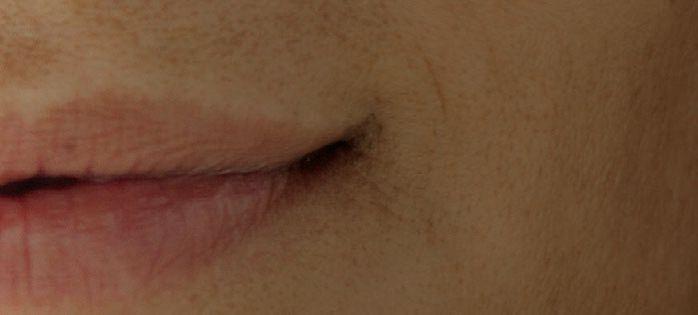













With as much focus on healing the mind and the spirit as the body. With a dedication to surrounding each individual with comprehensive, high-quality care, provided on demand. With a goal of making the entire healthcare process easy for each patient and family. Good news: you don’t have to wait. It starts today, with Florida Hospital’s Care Network. Discover how at SomedayStartsToday.com.

